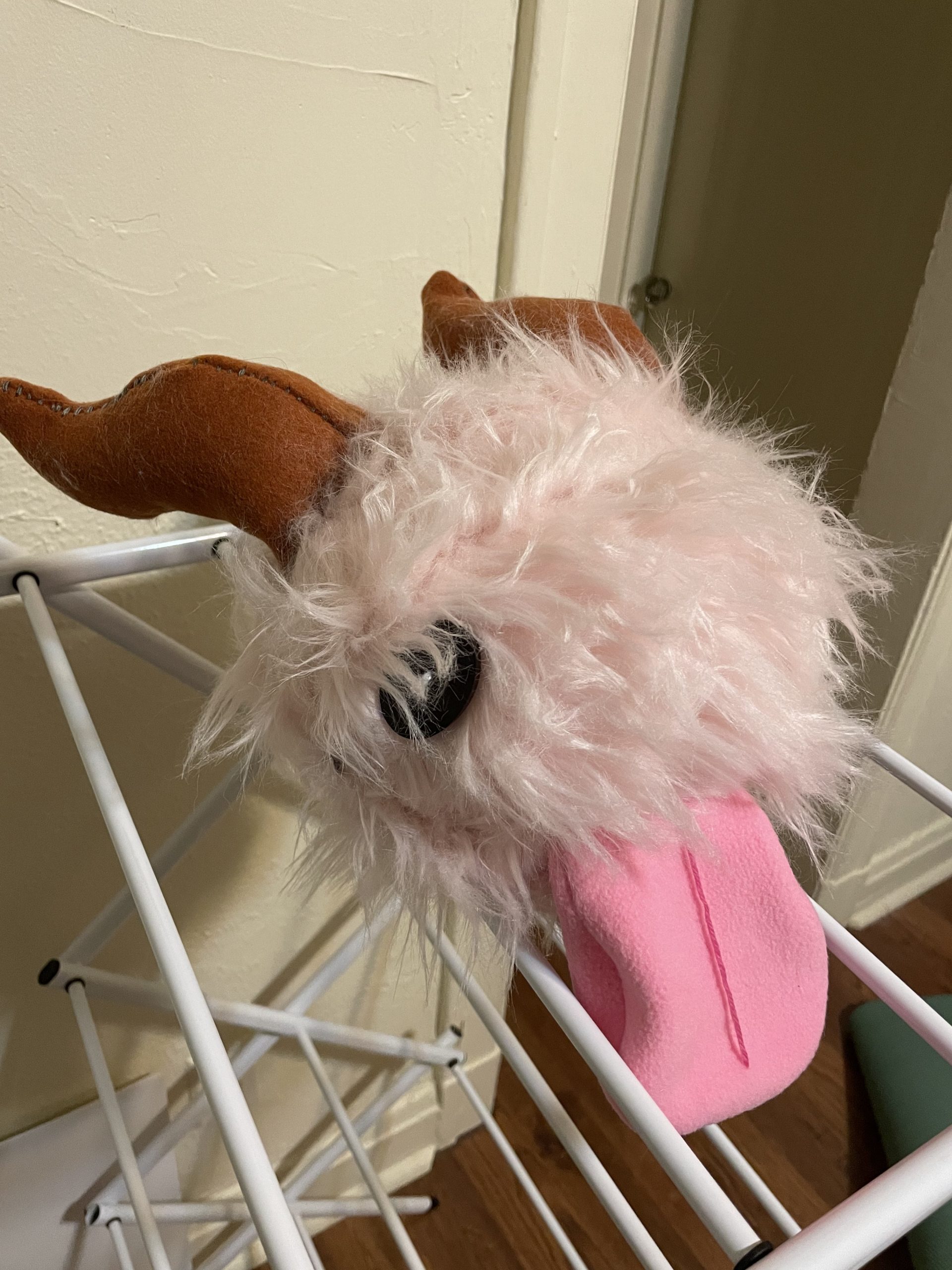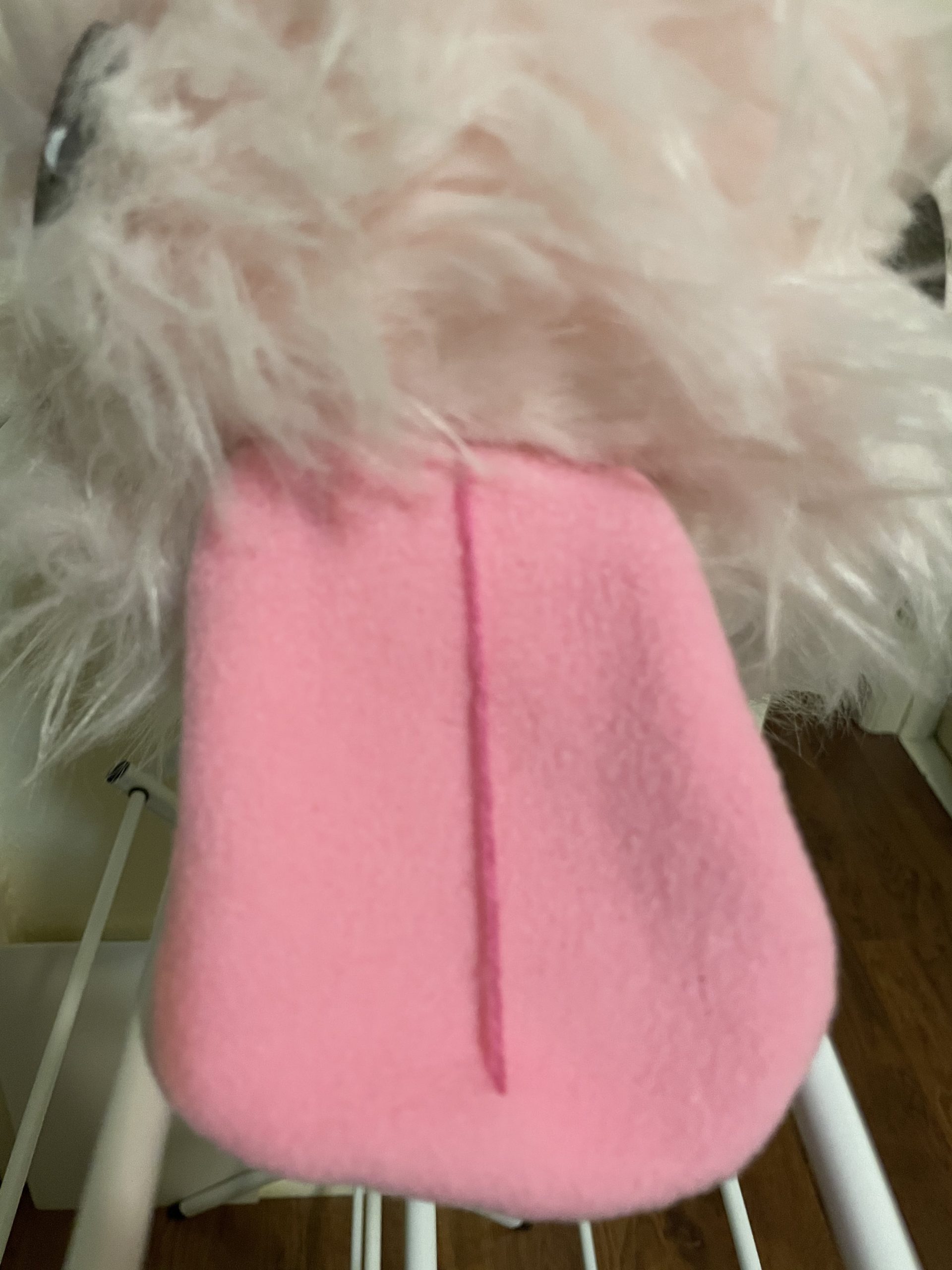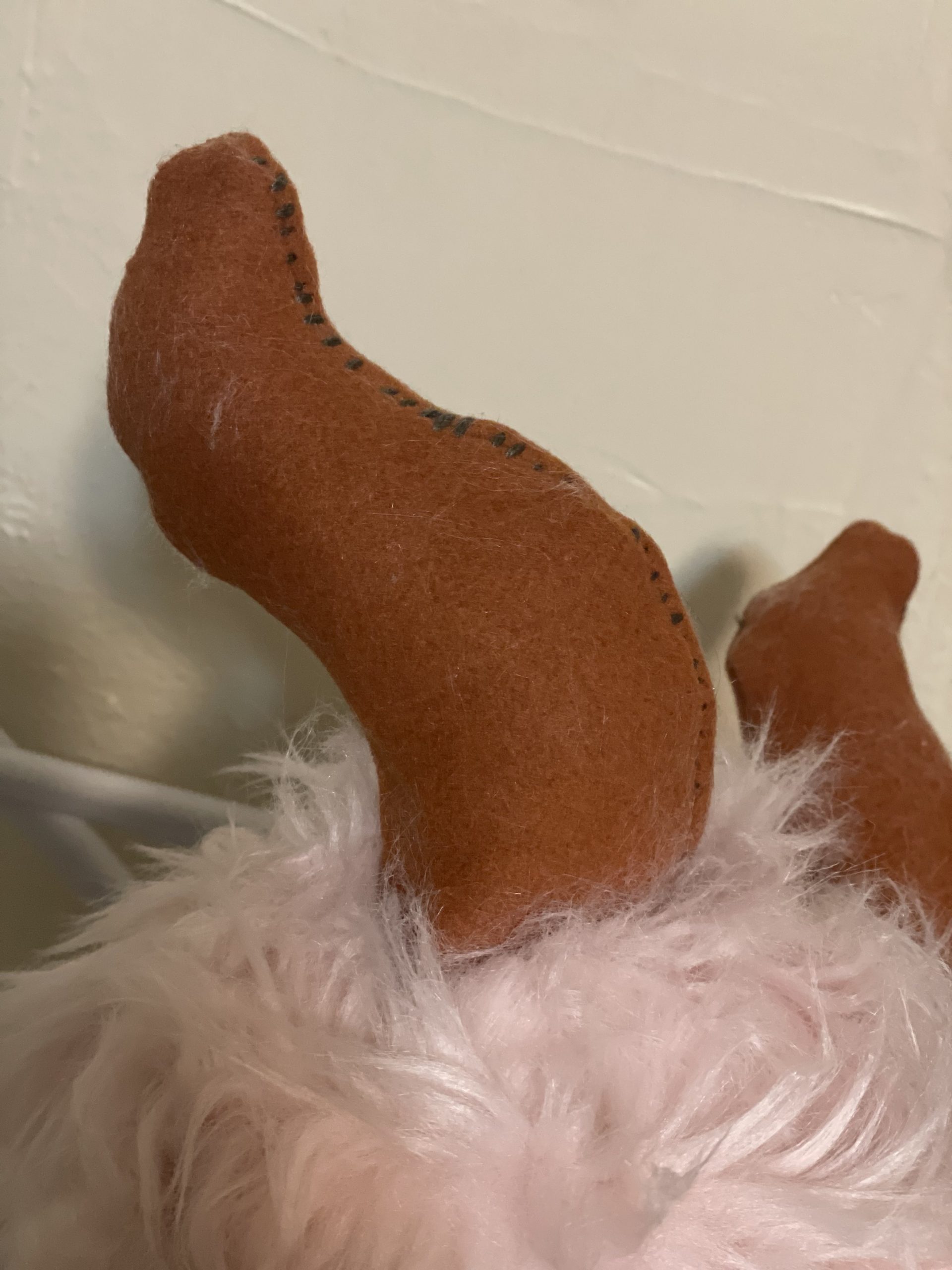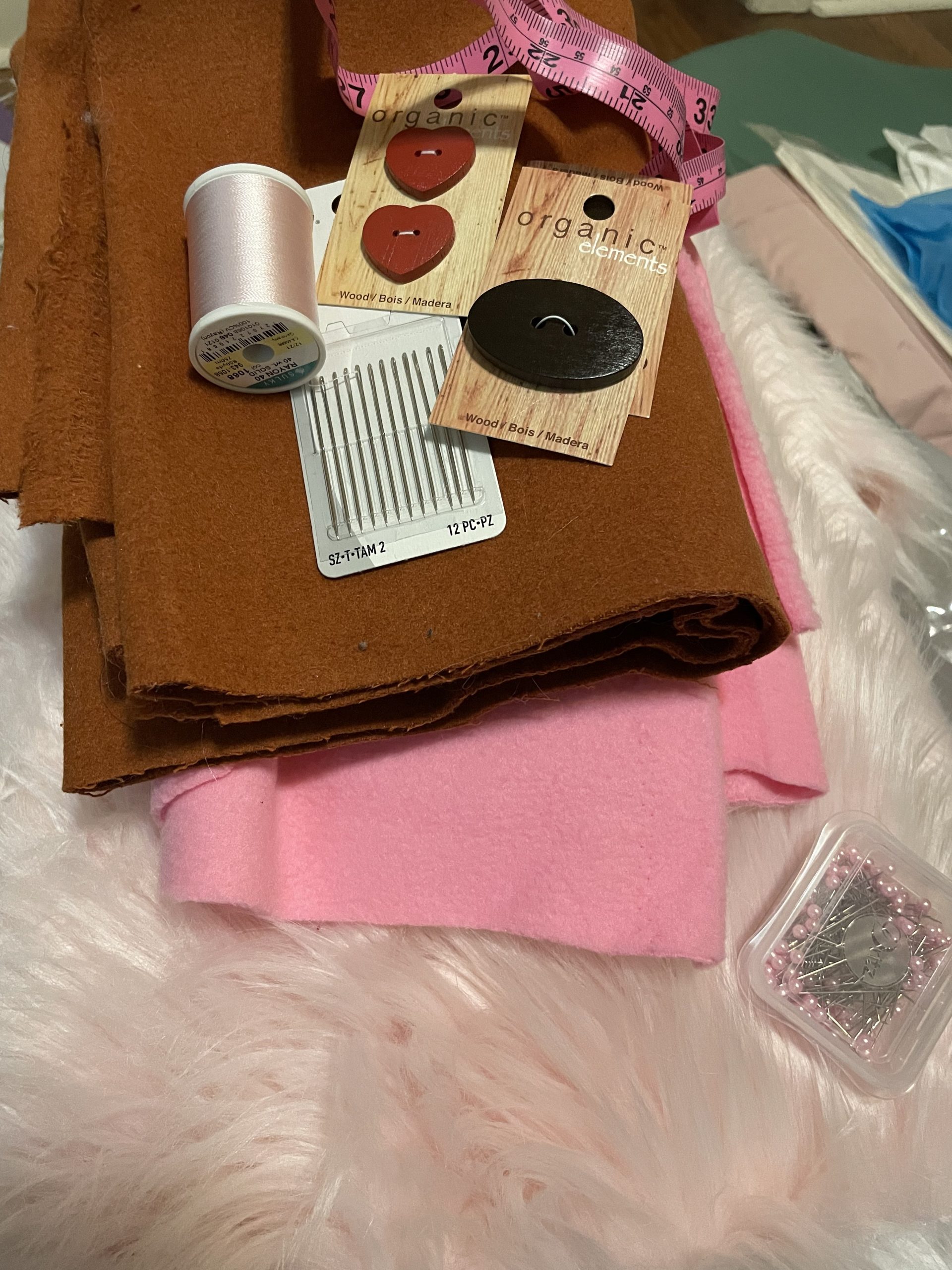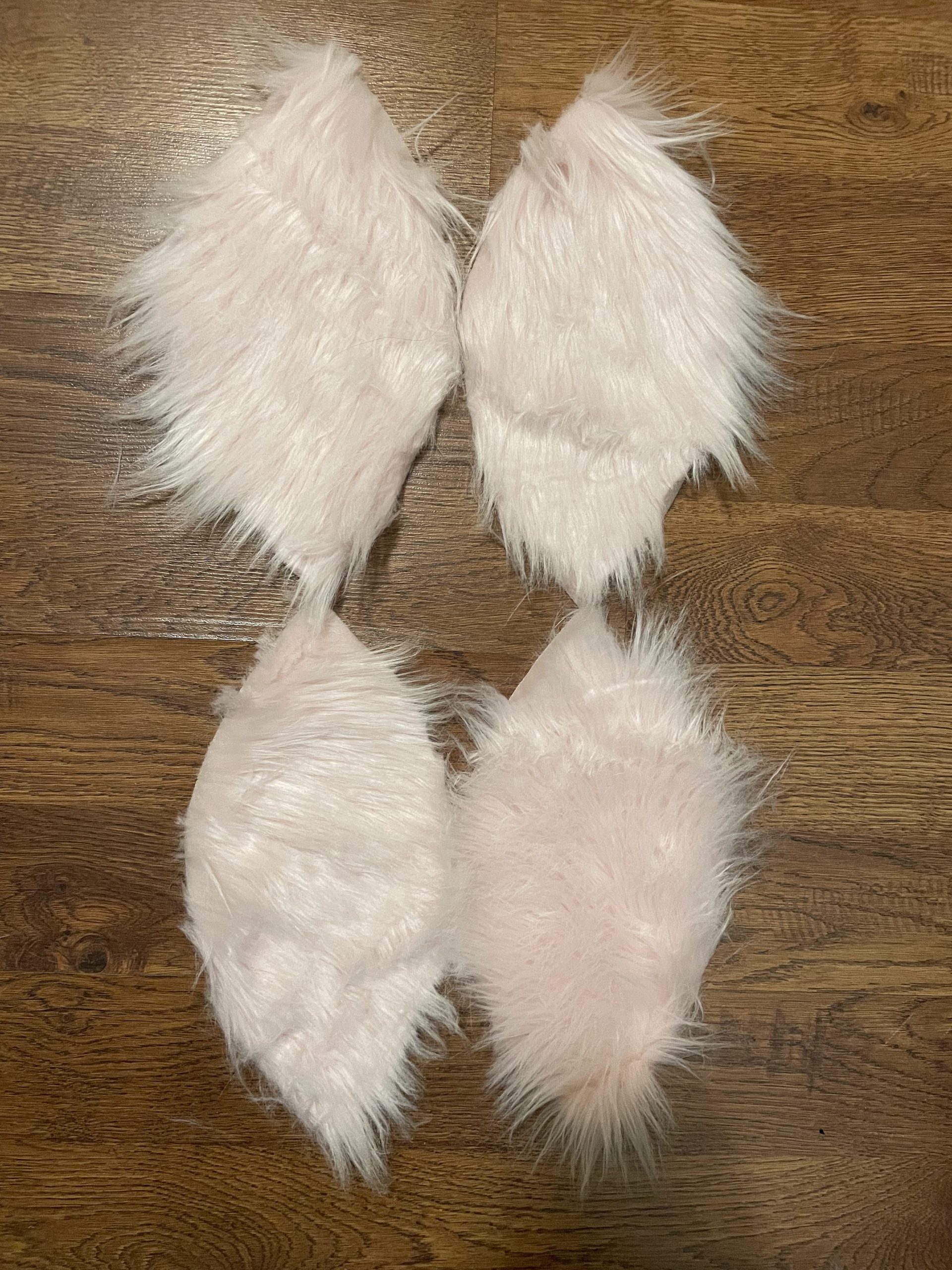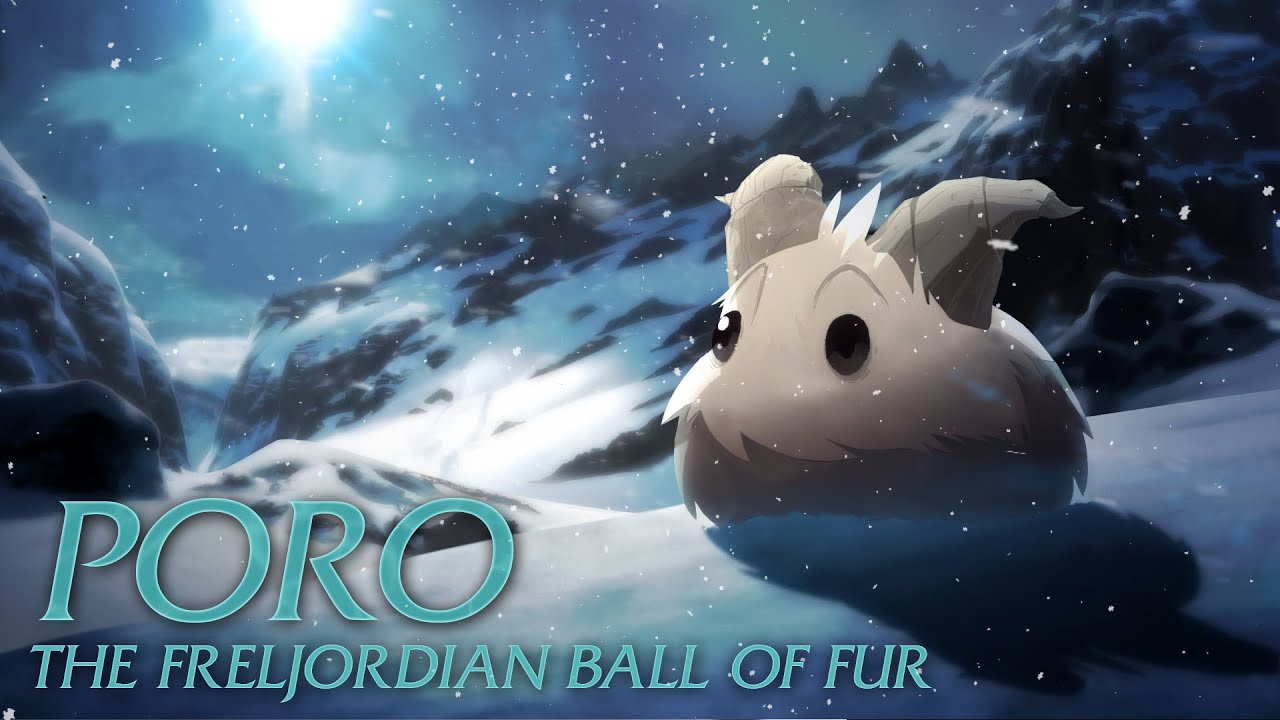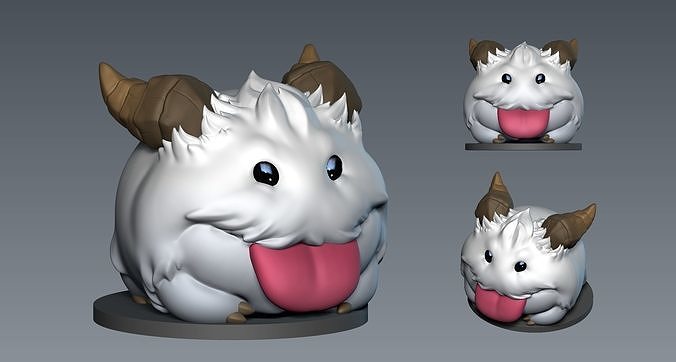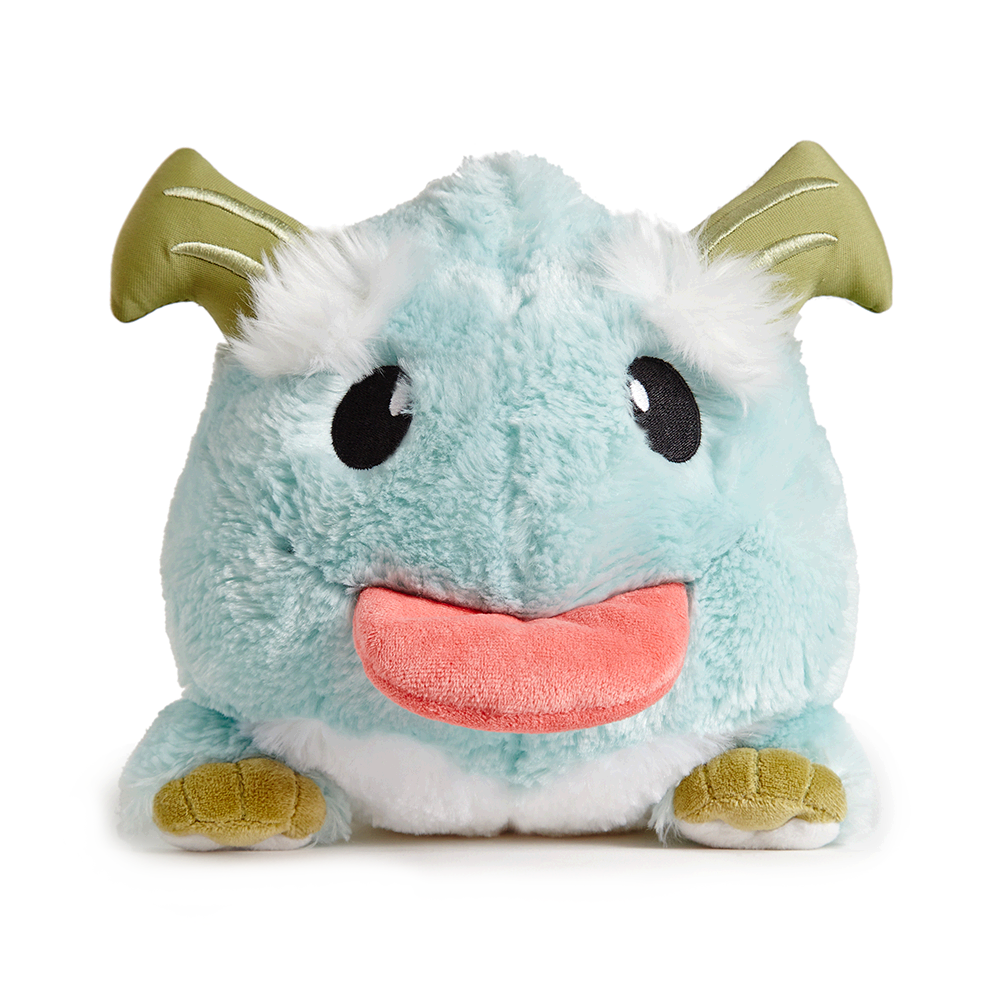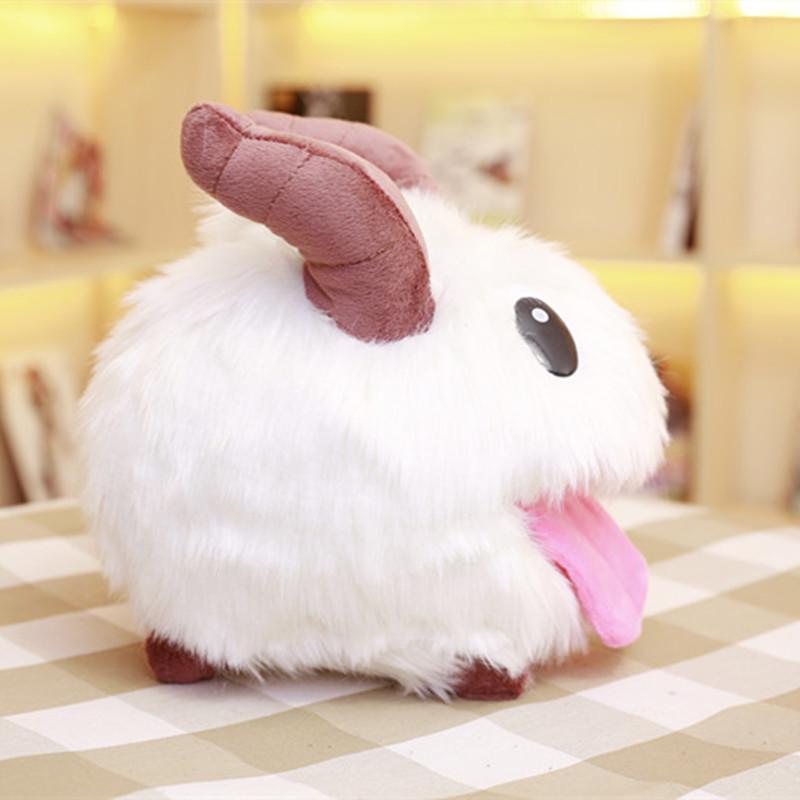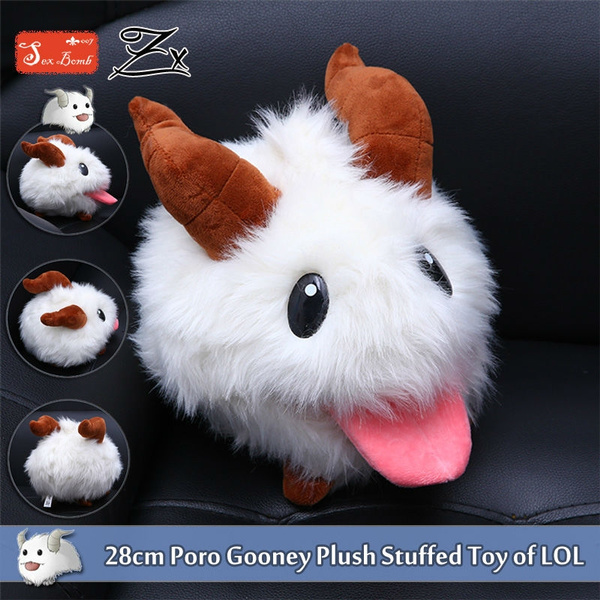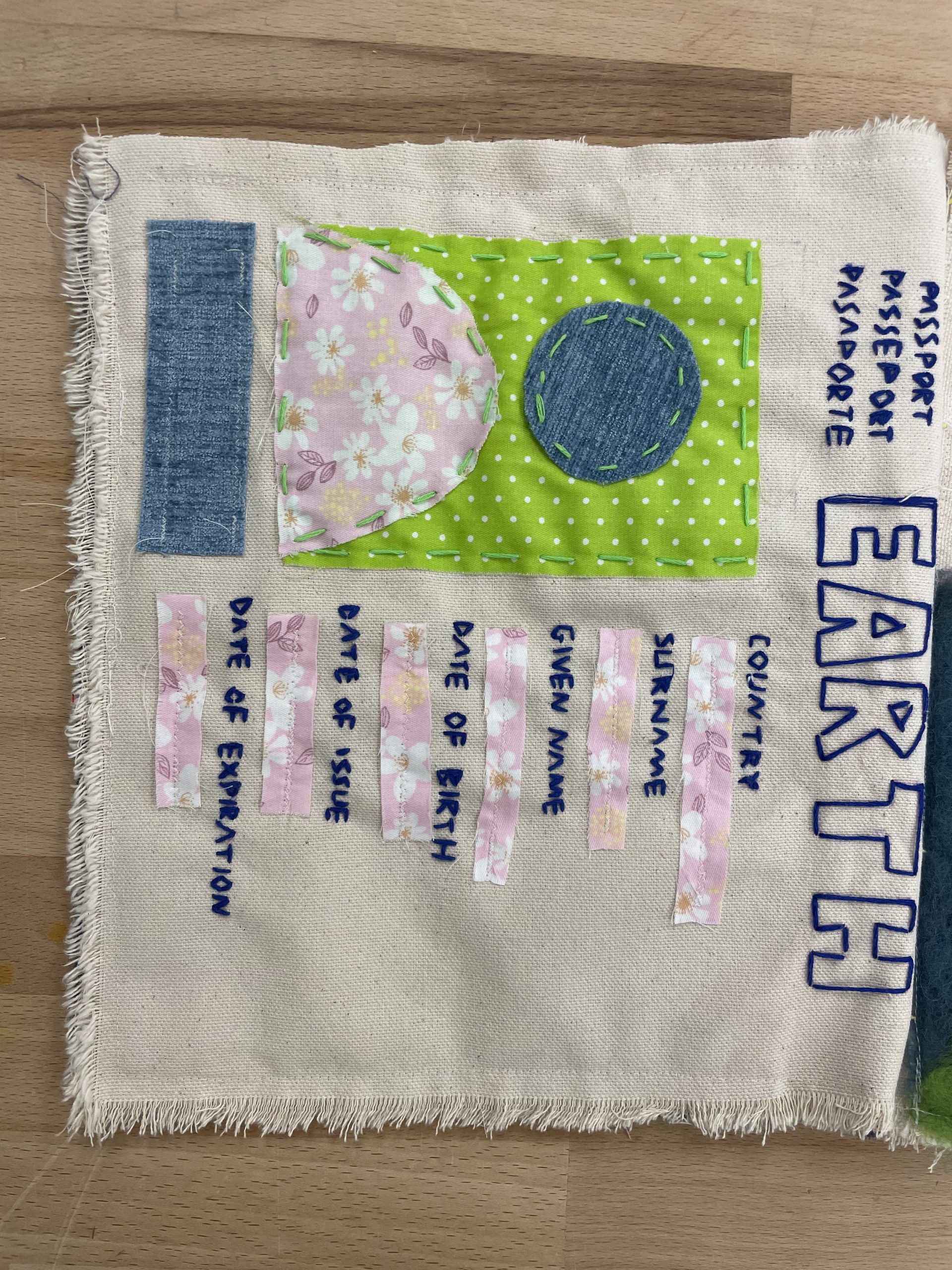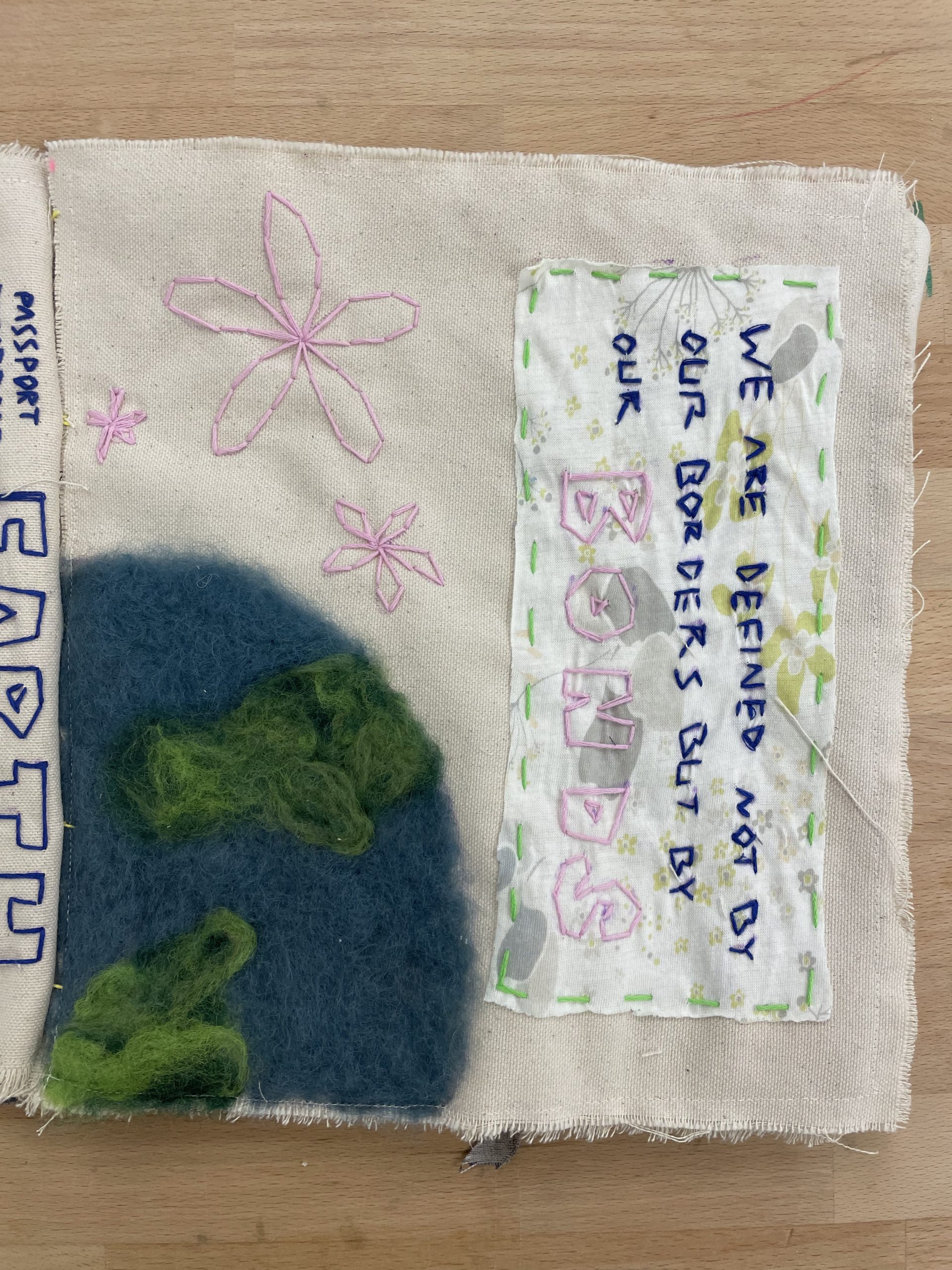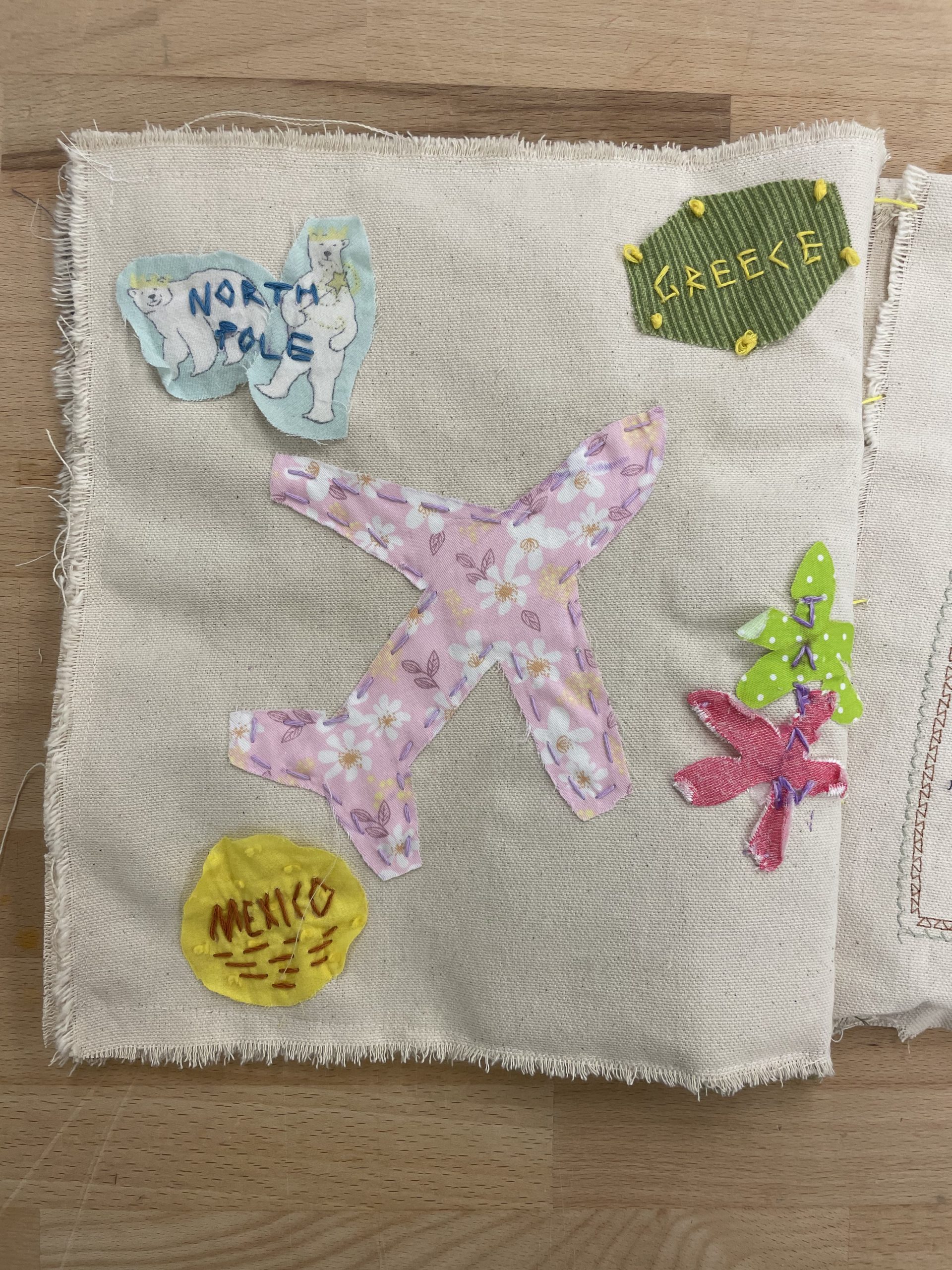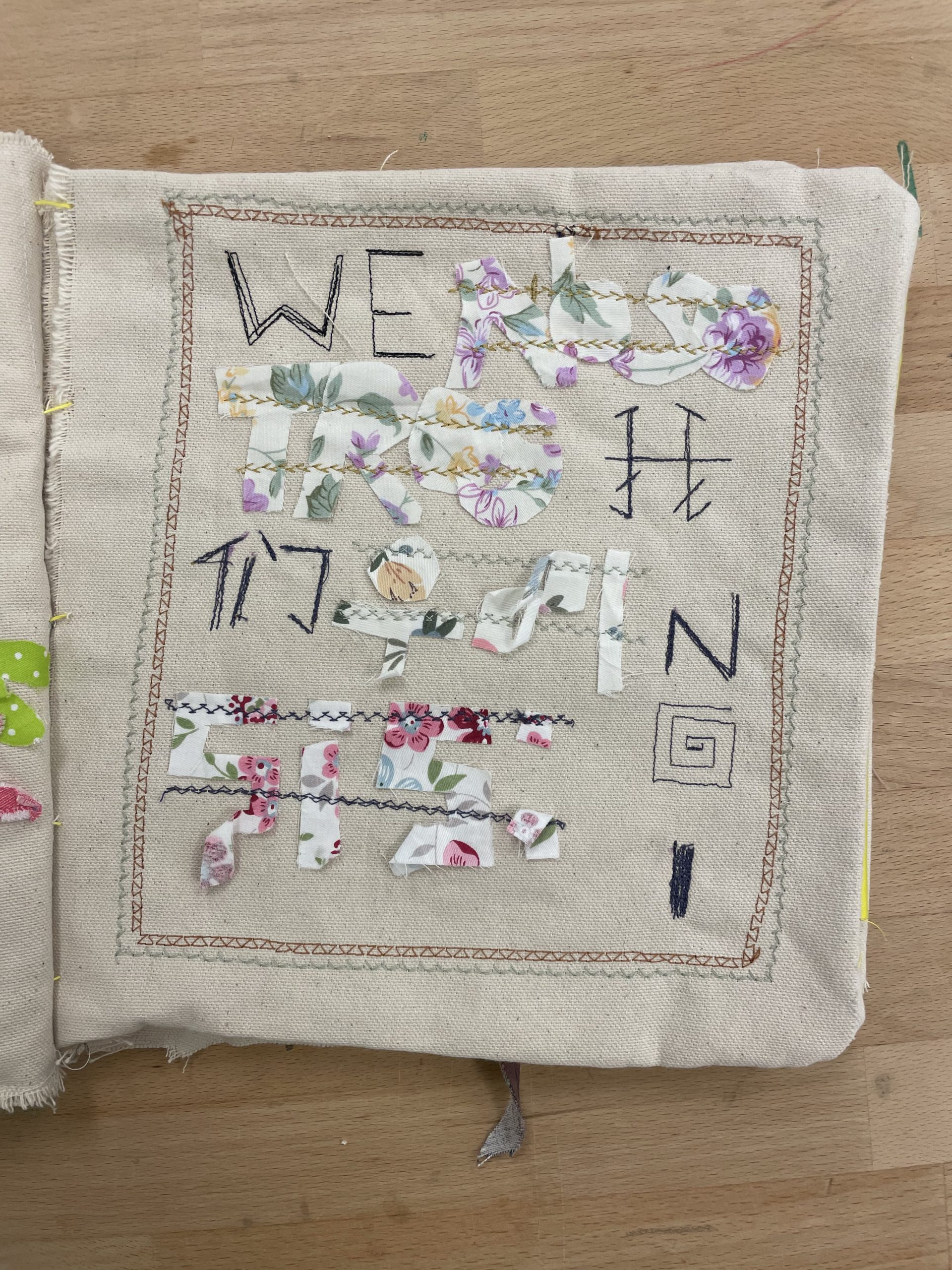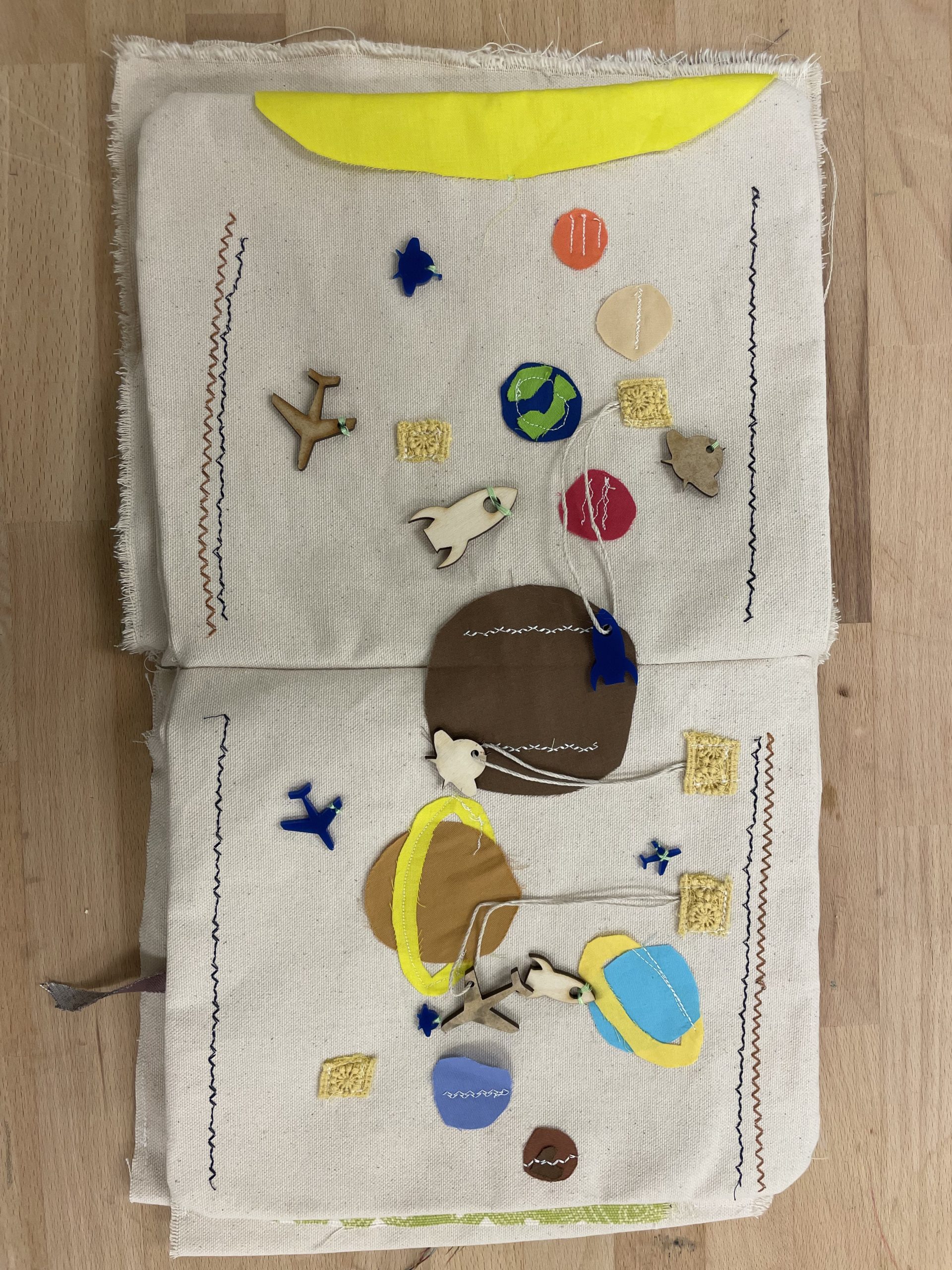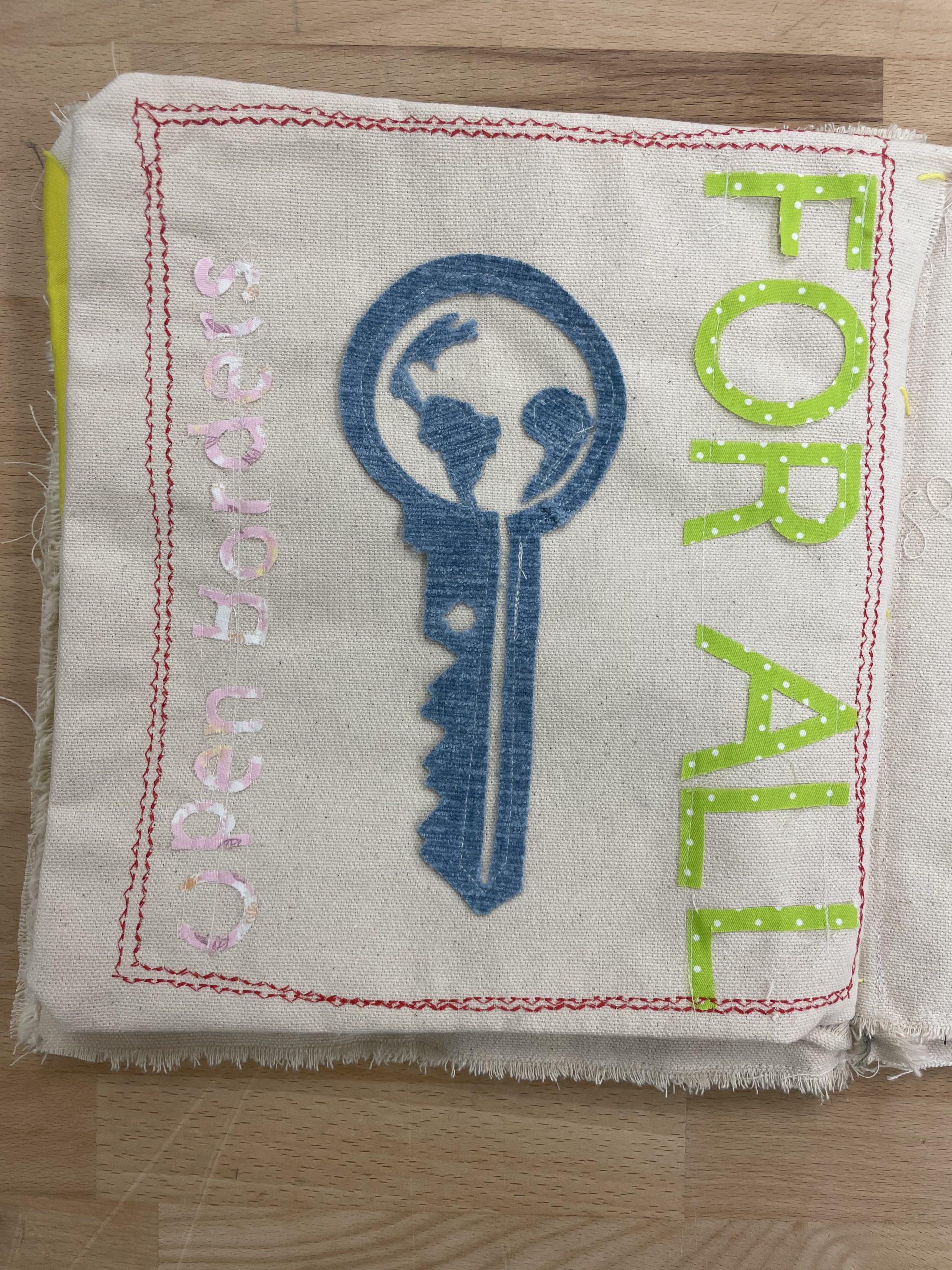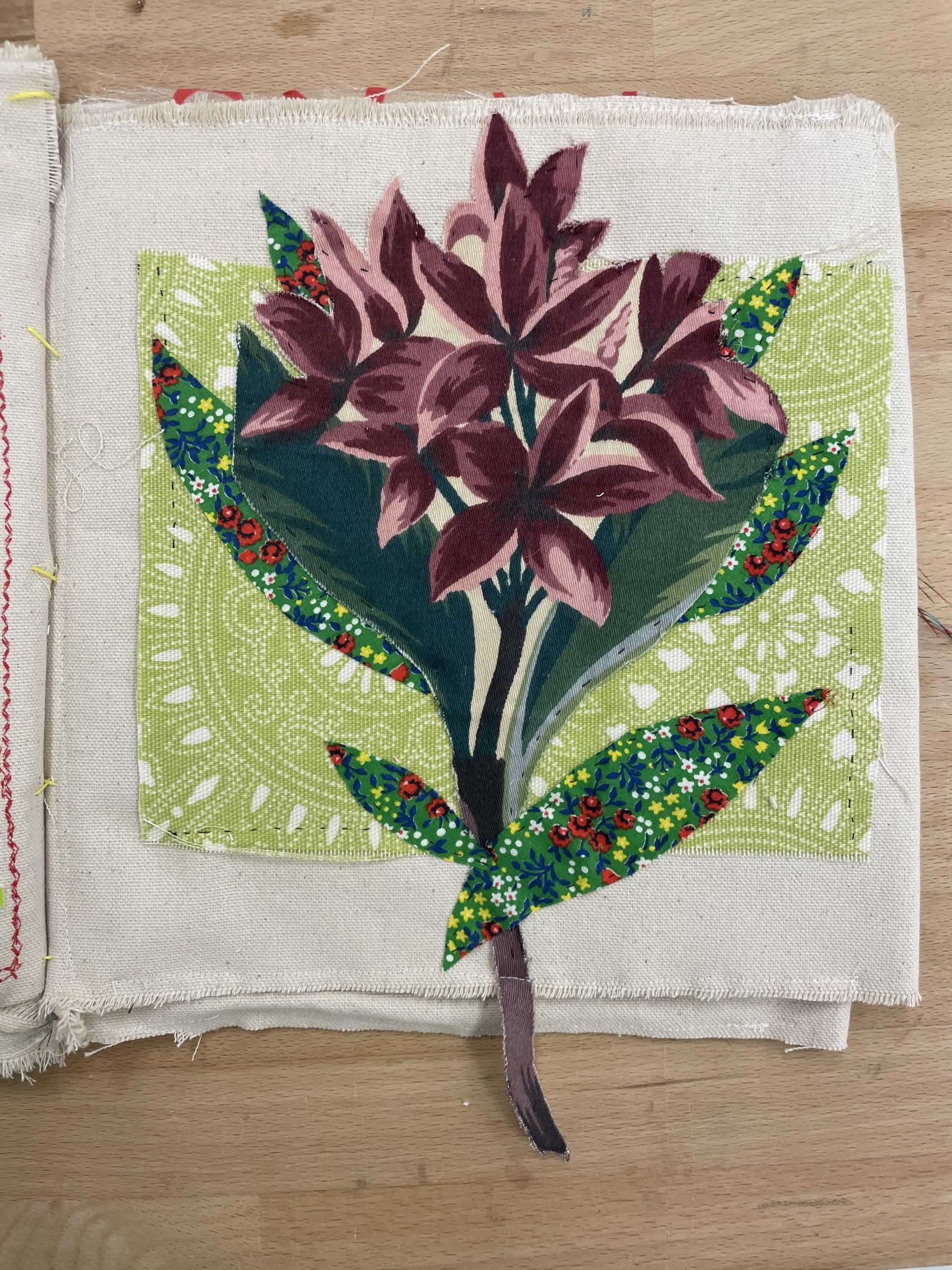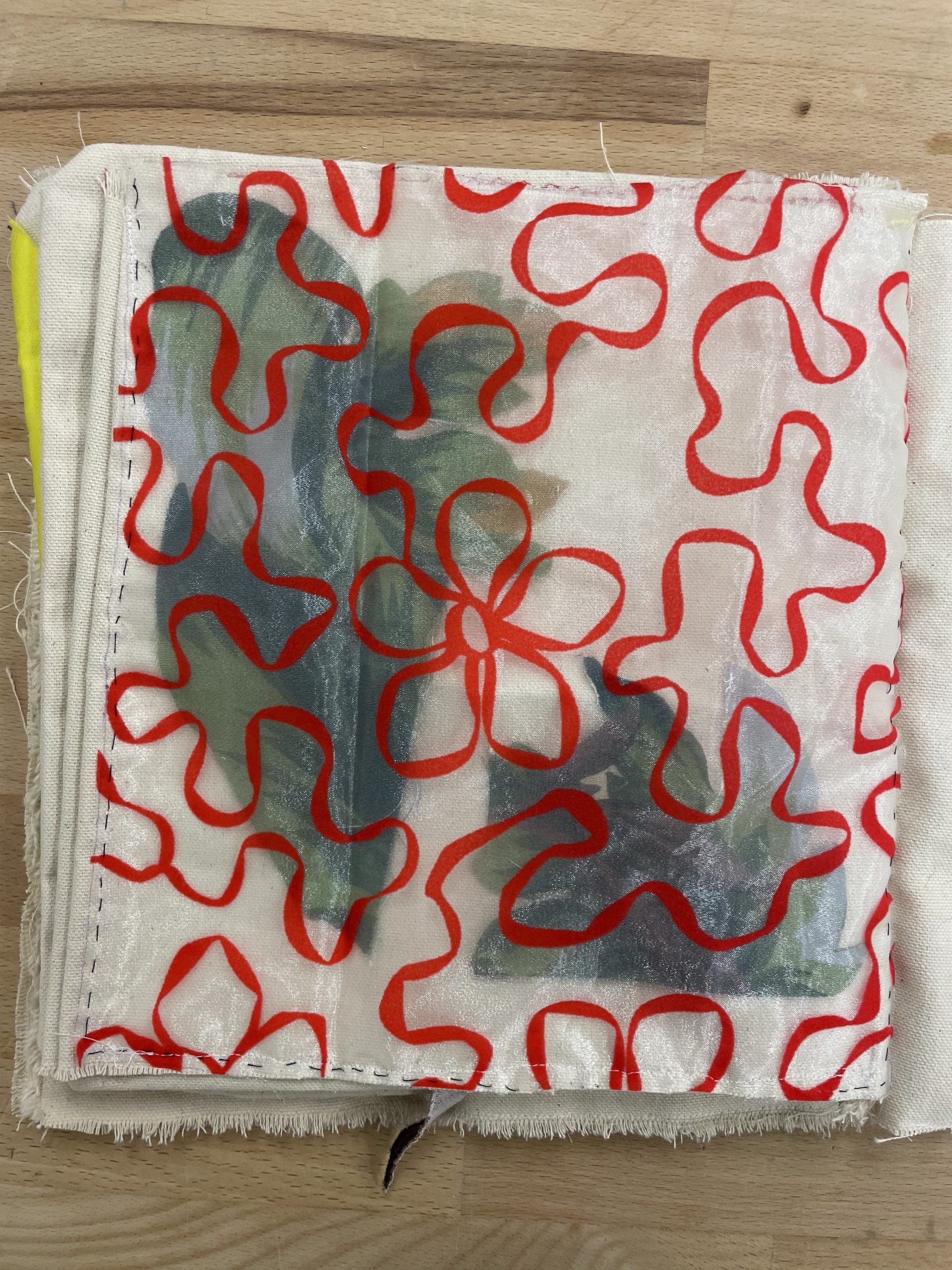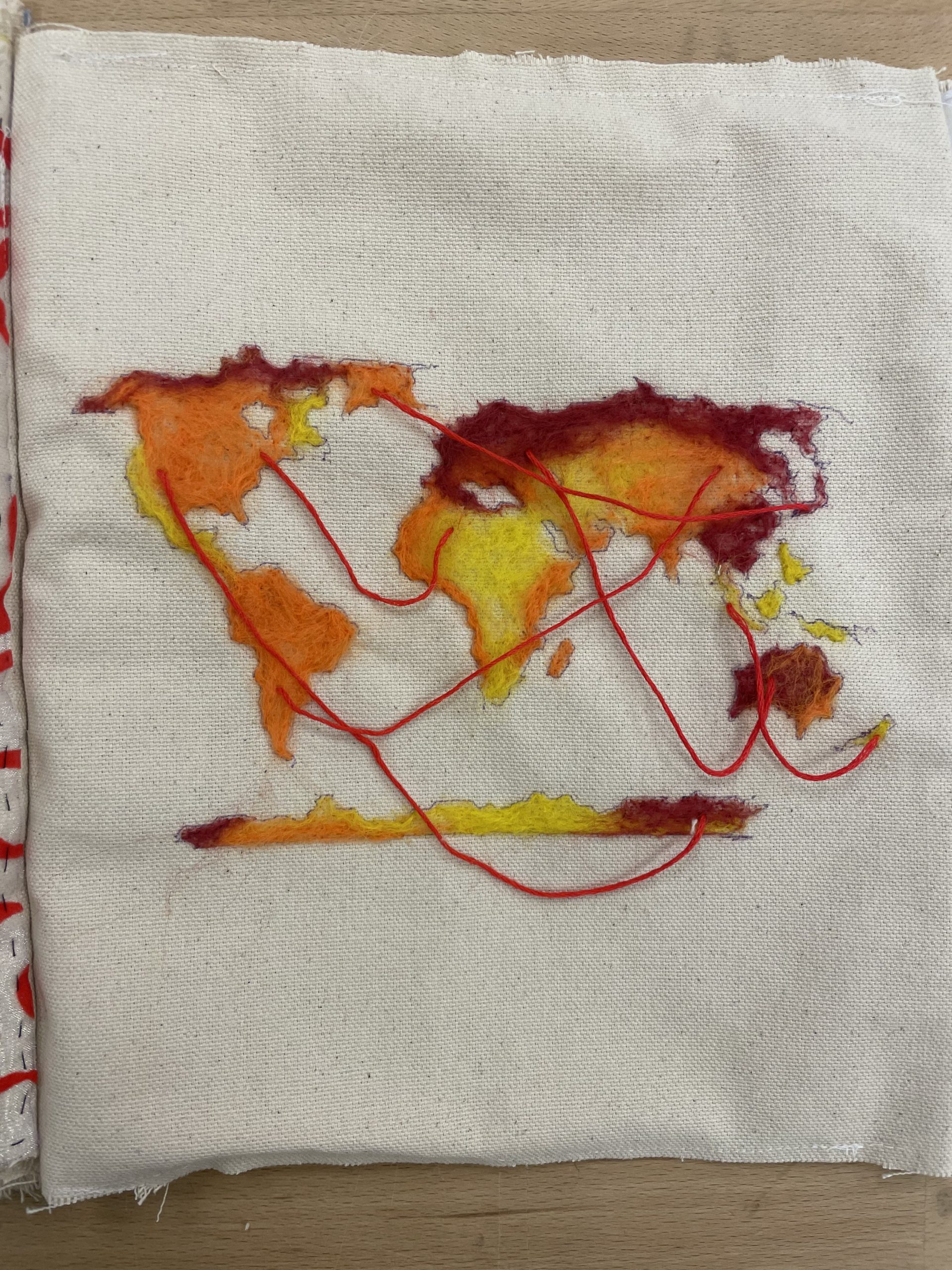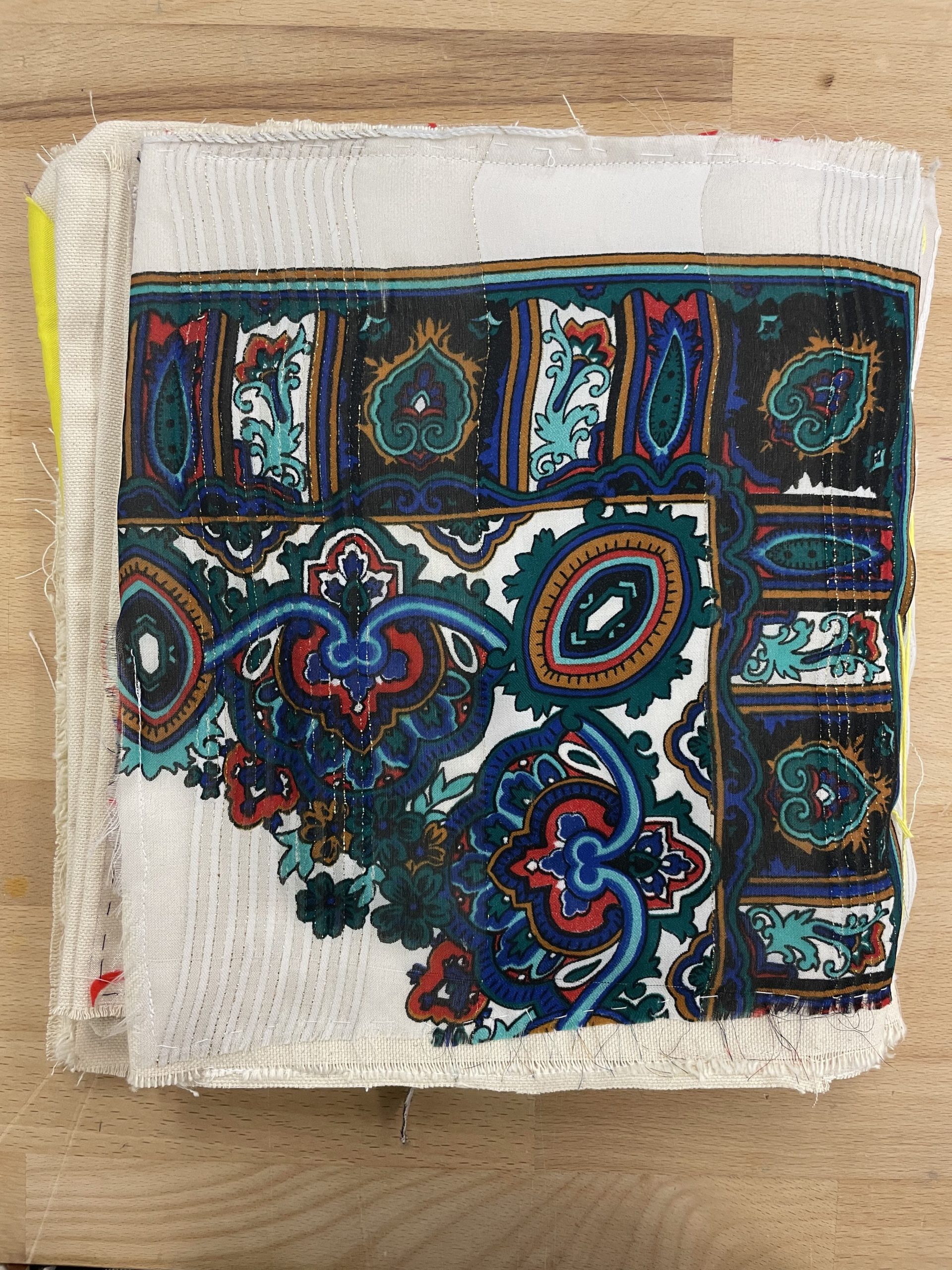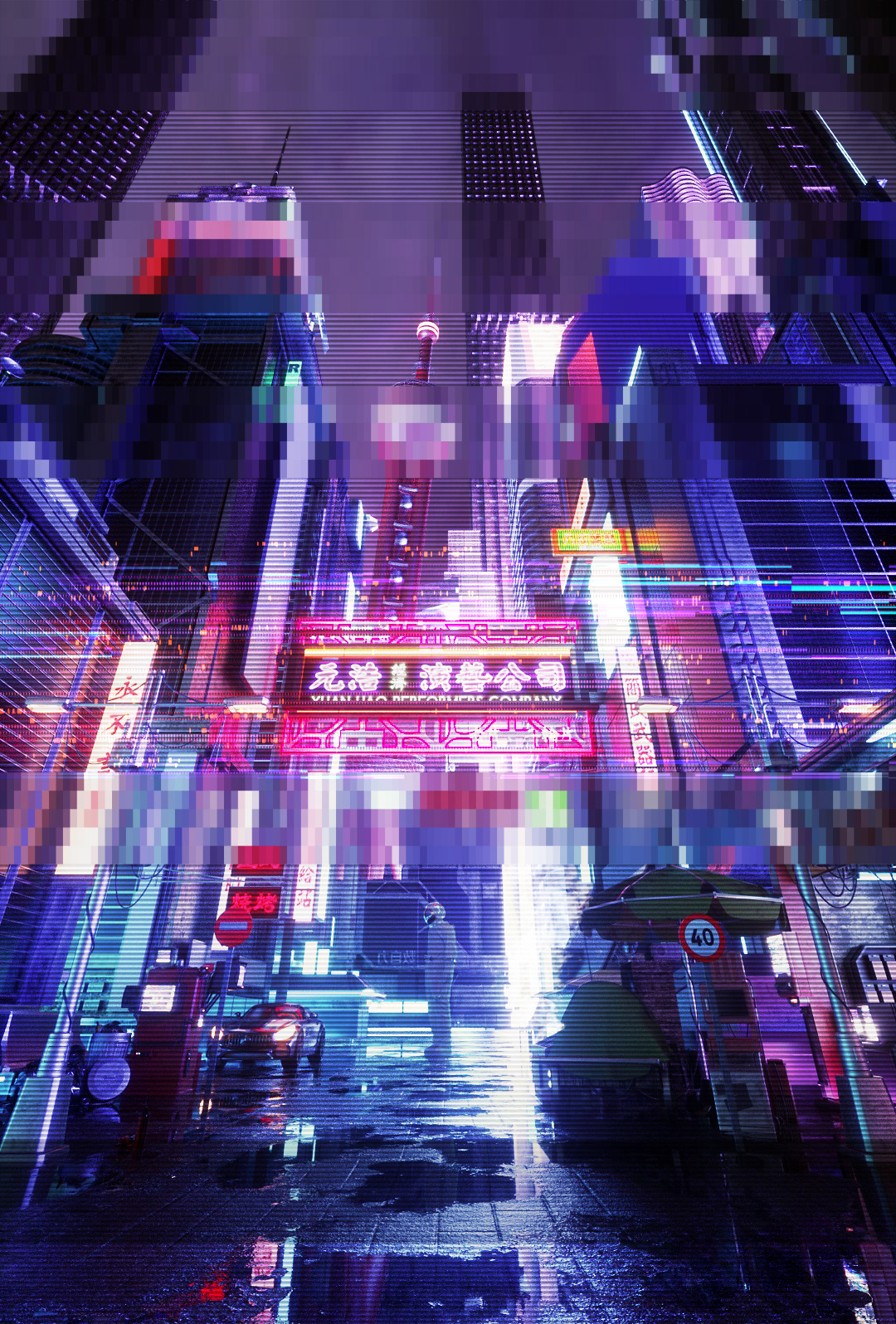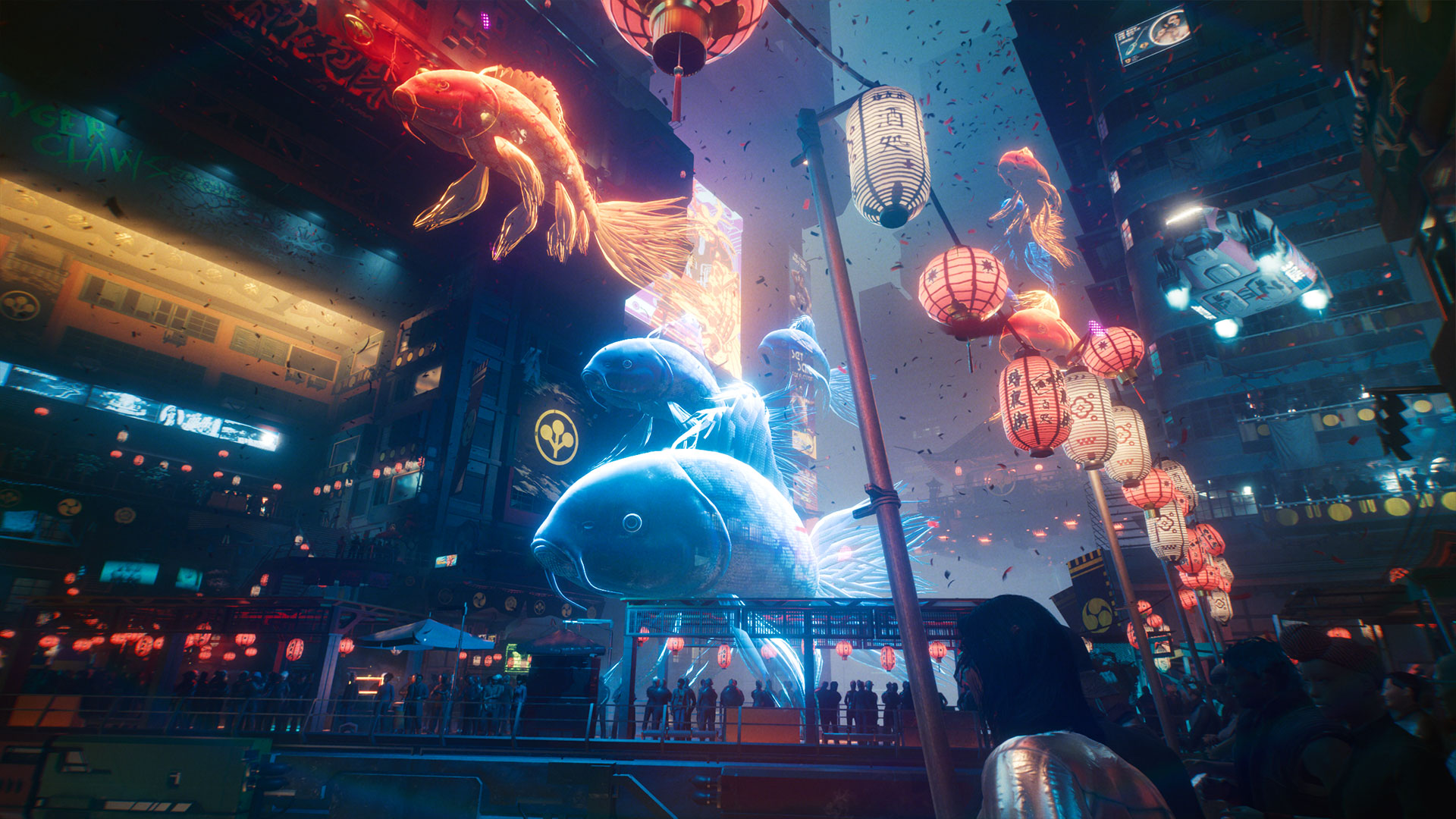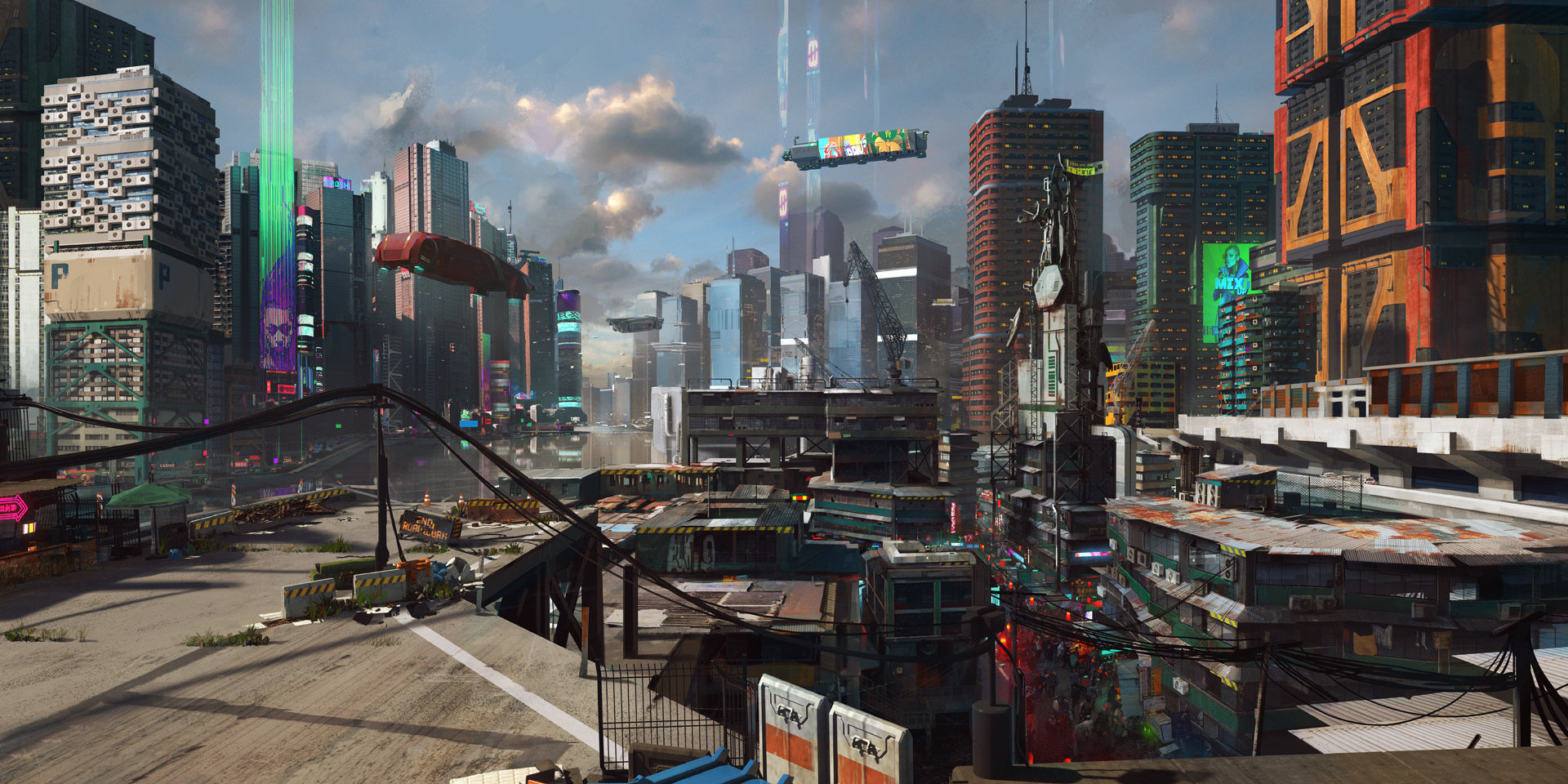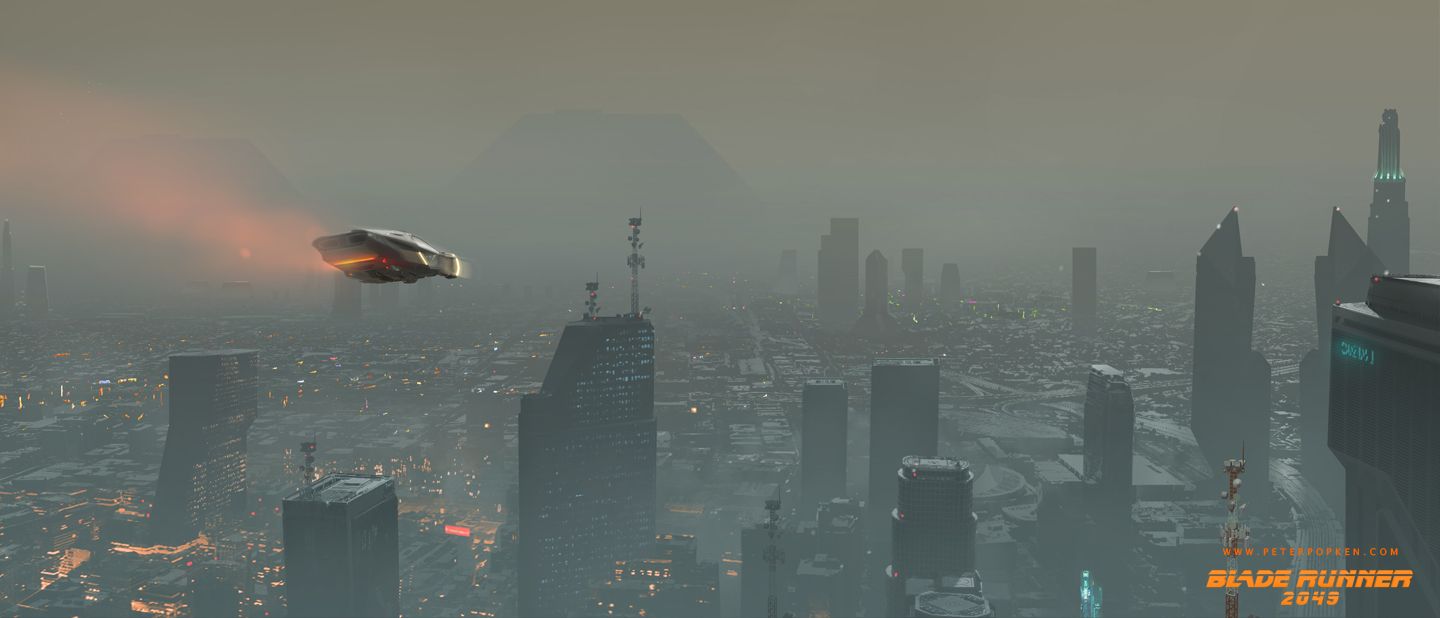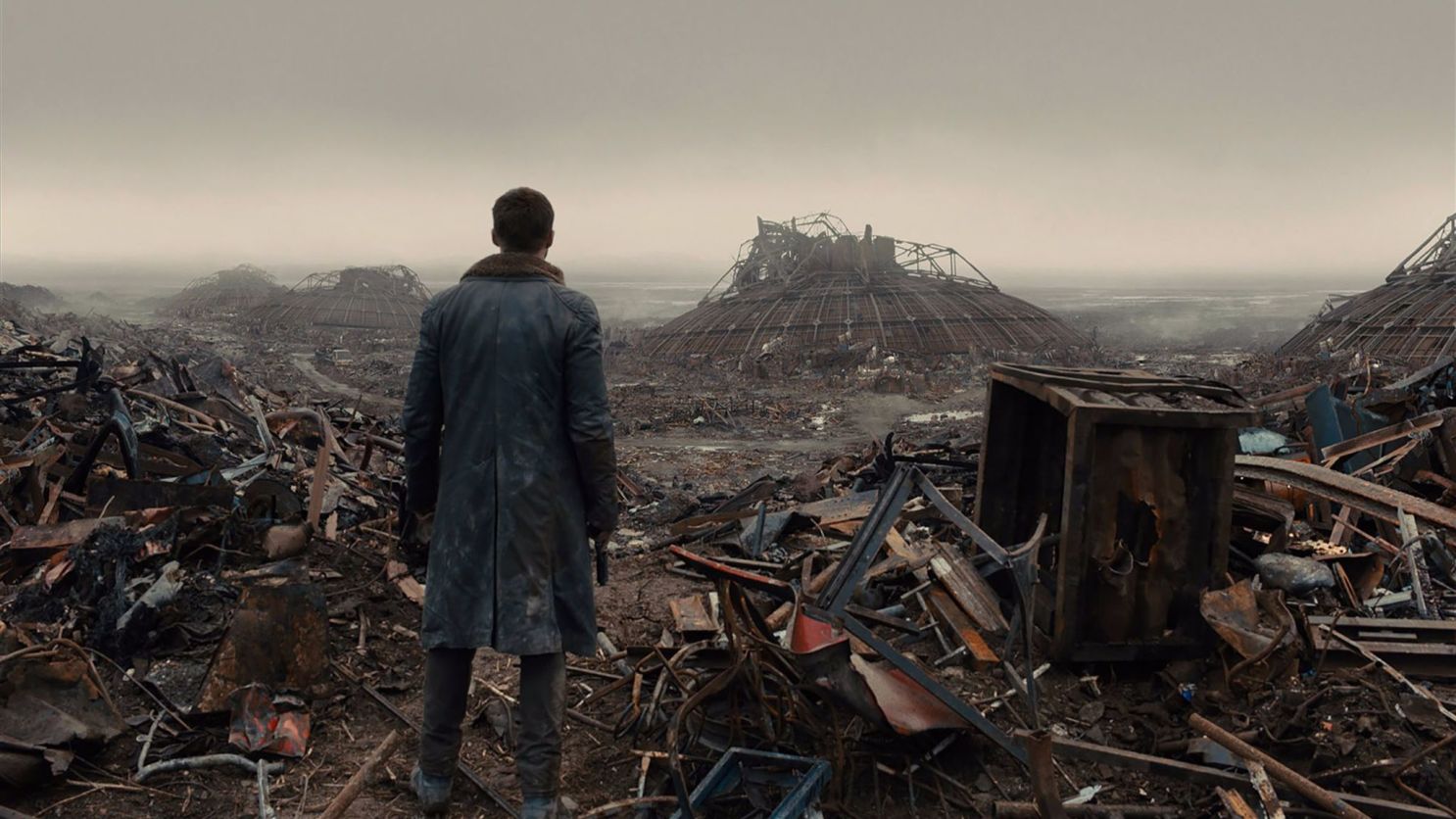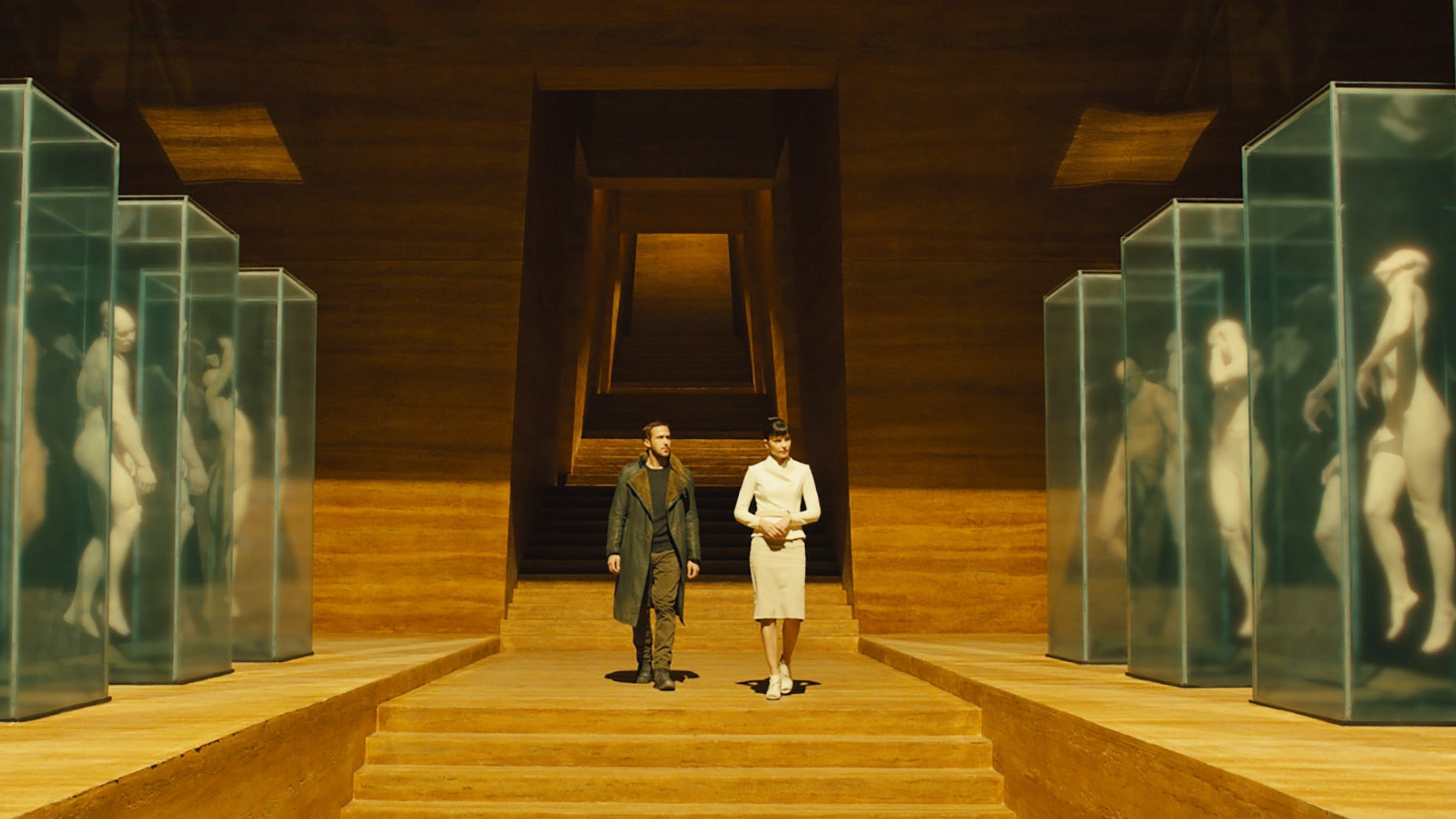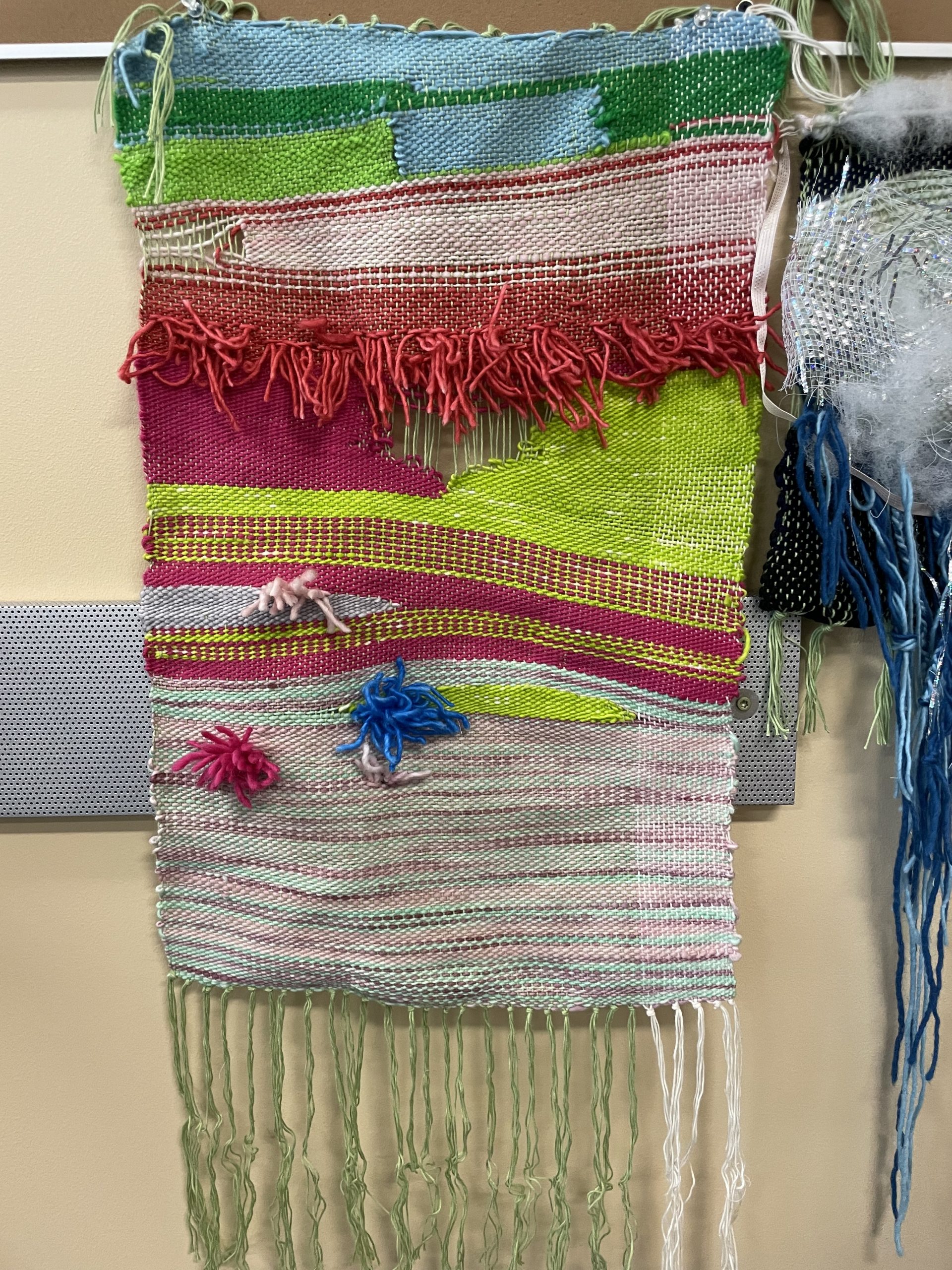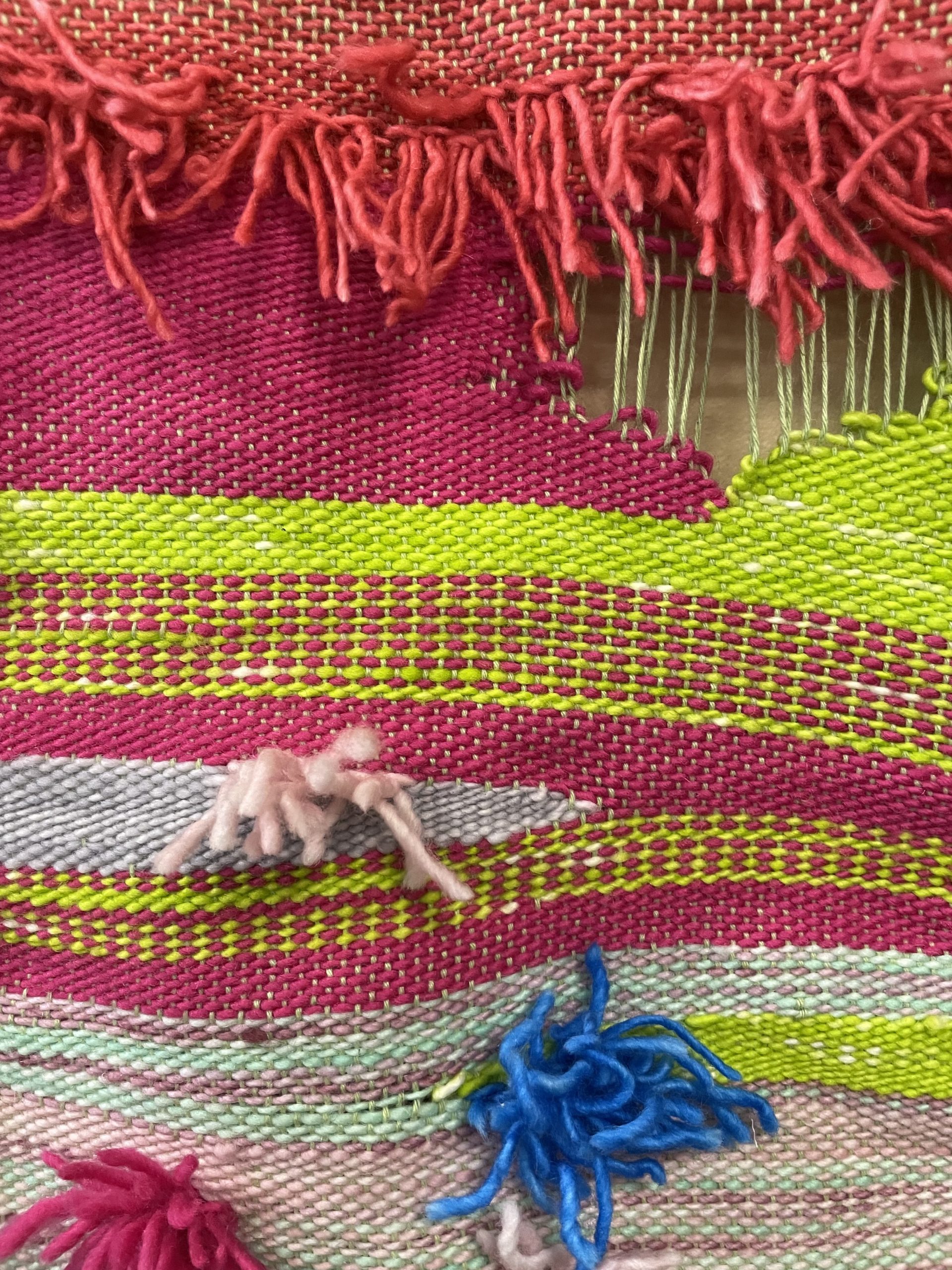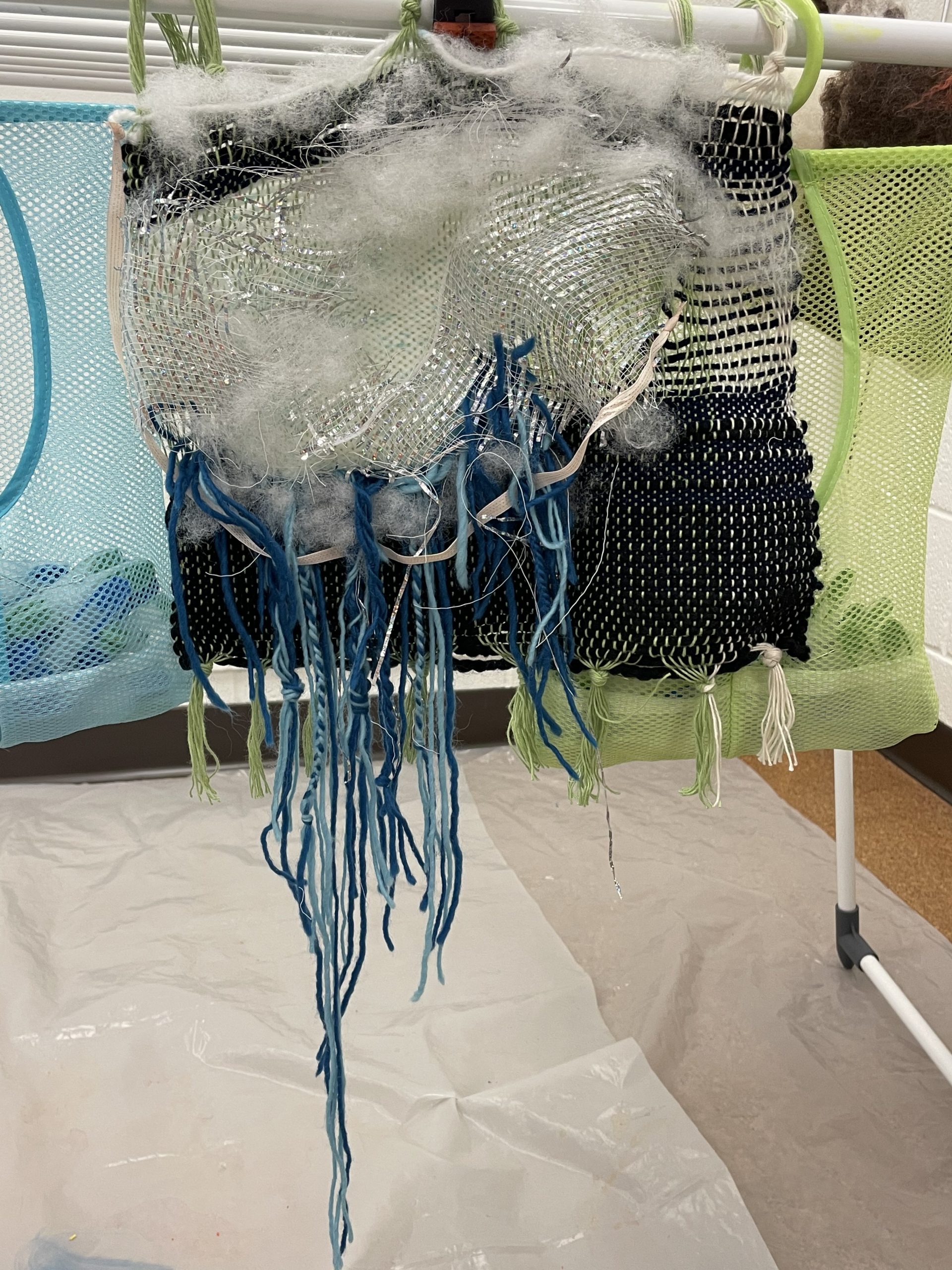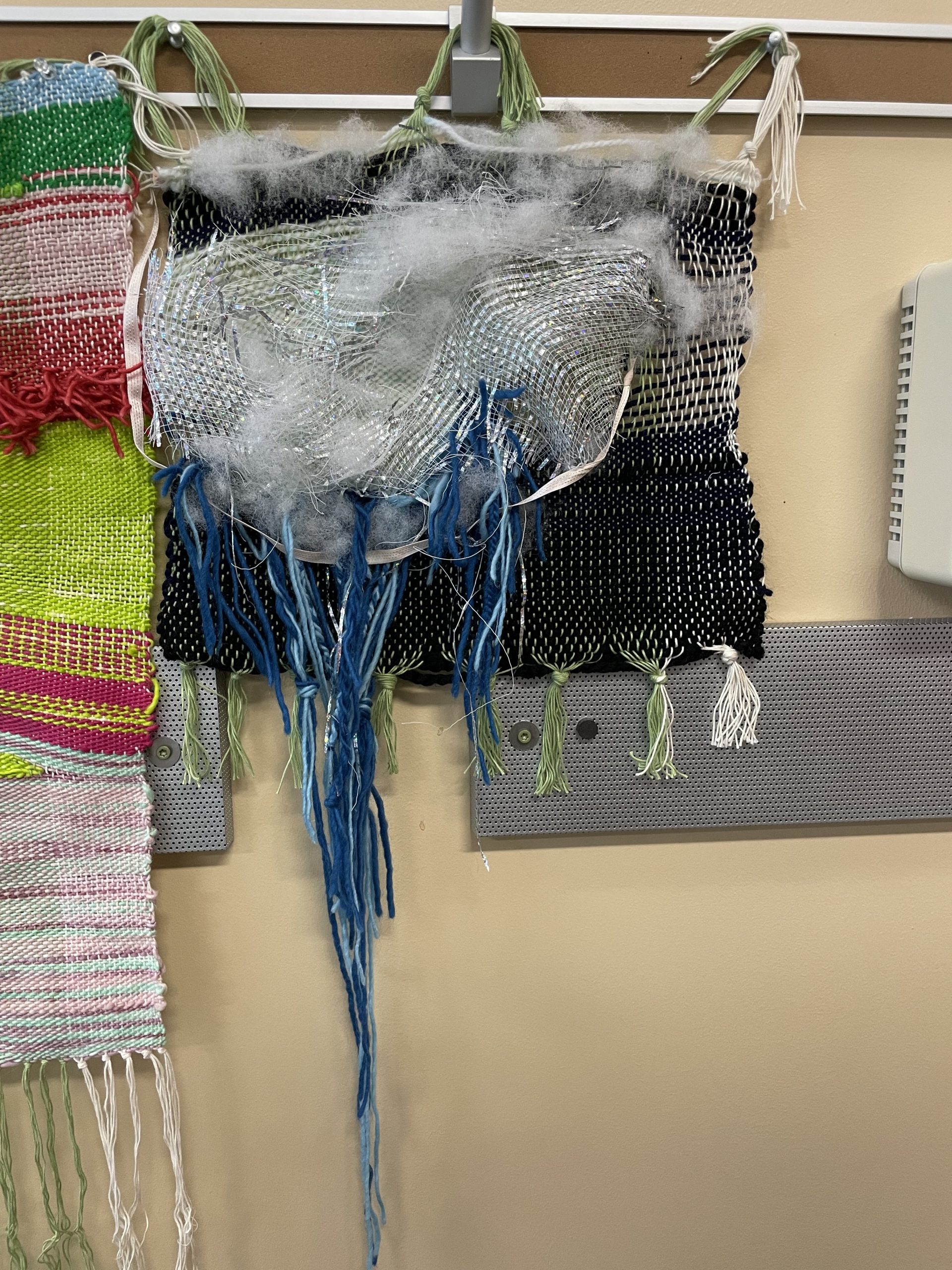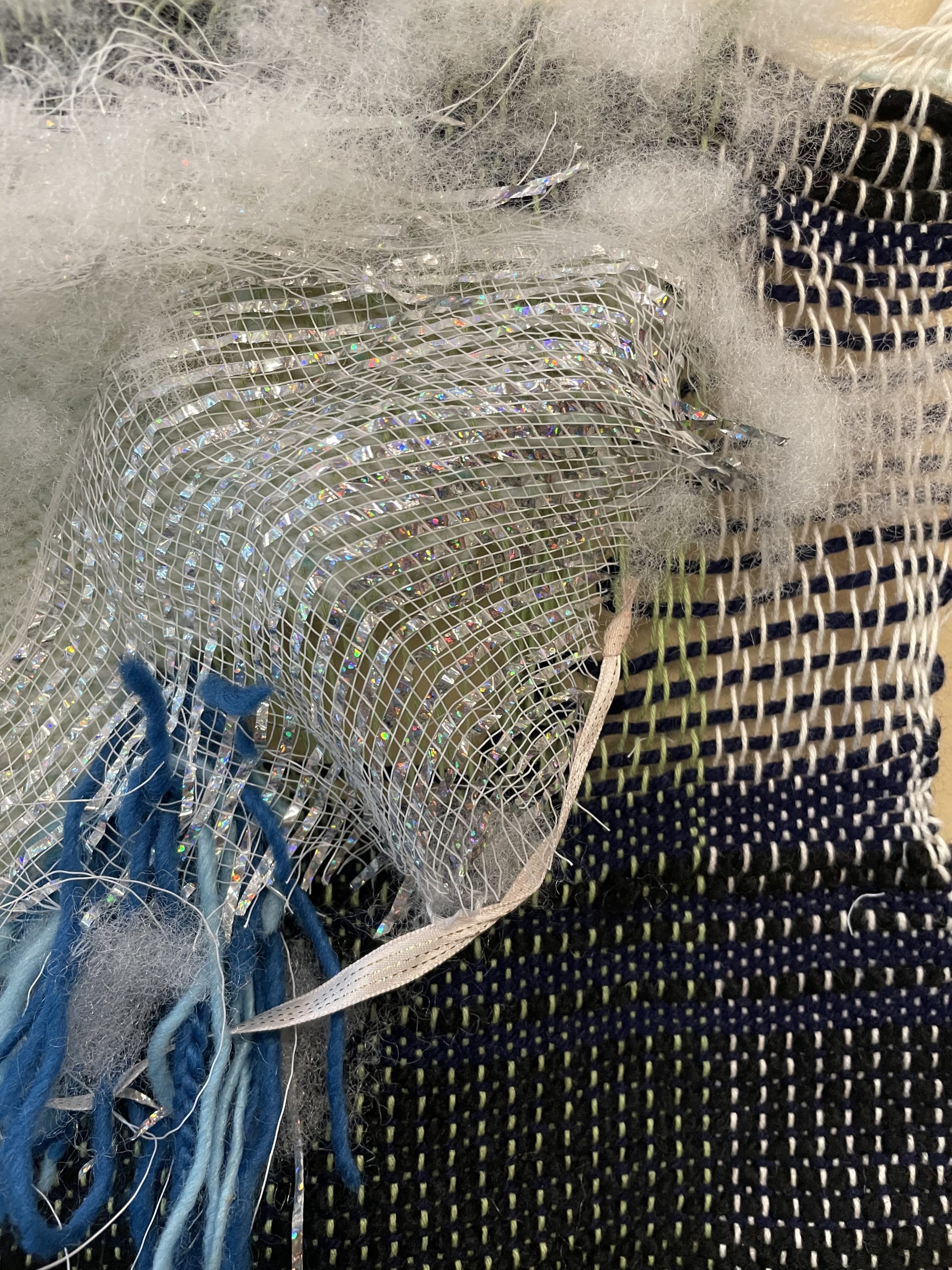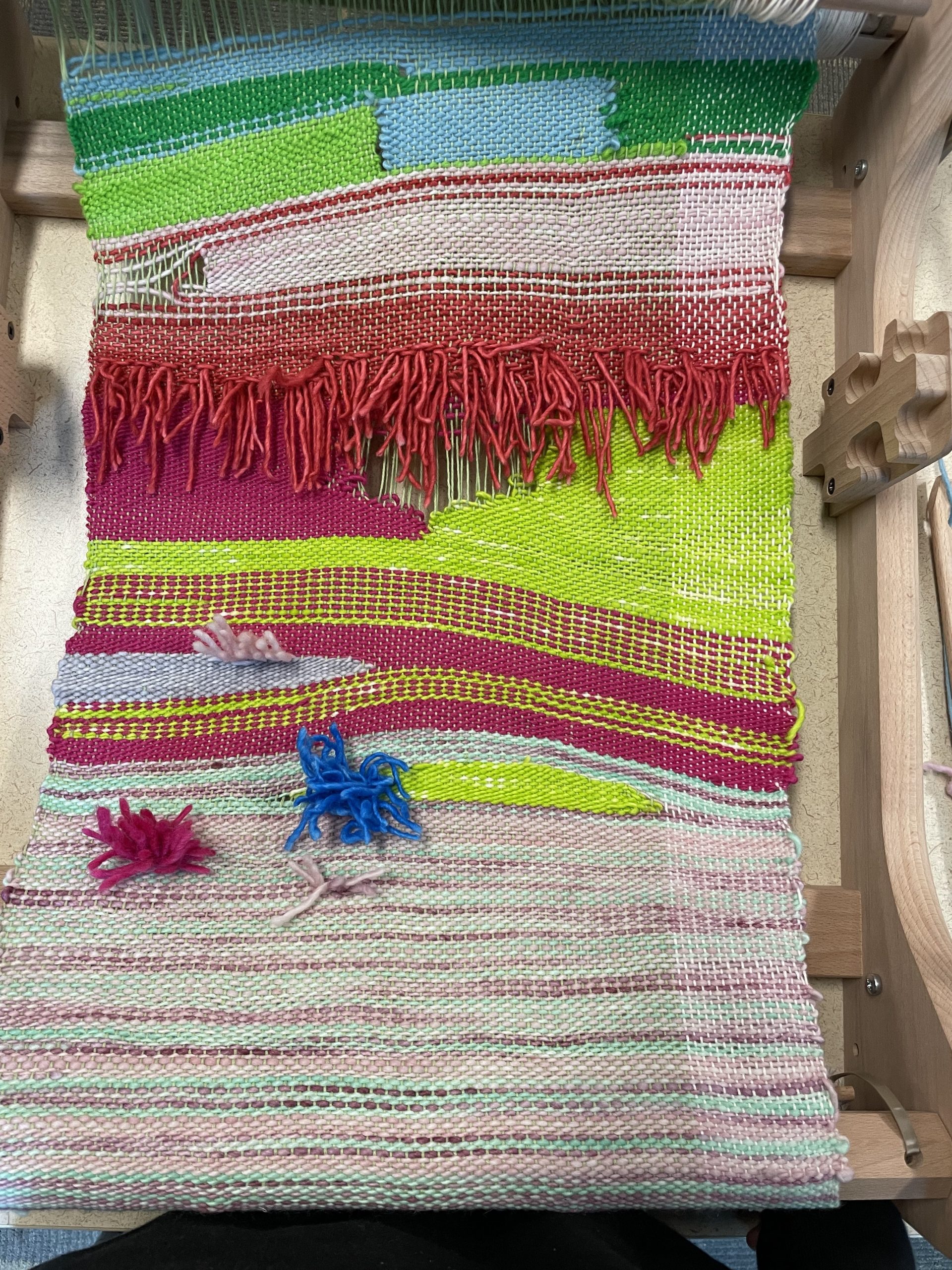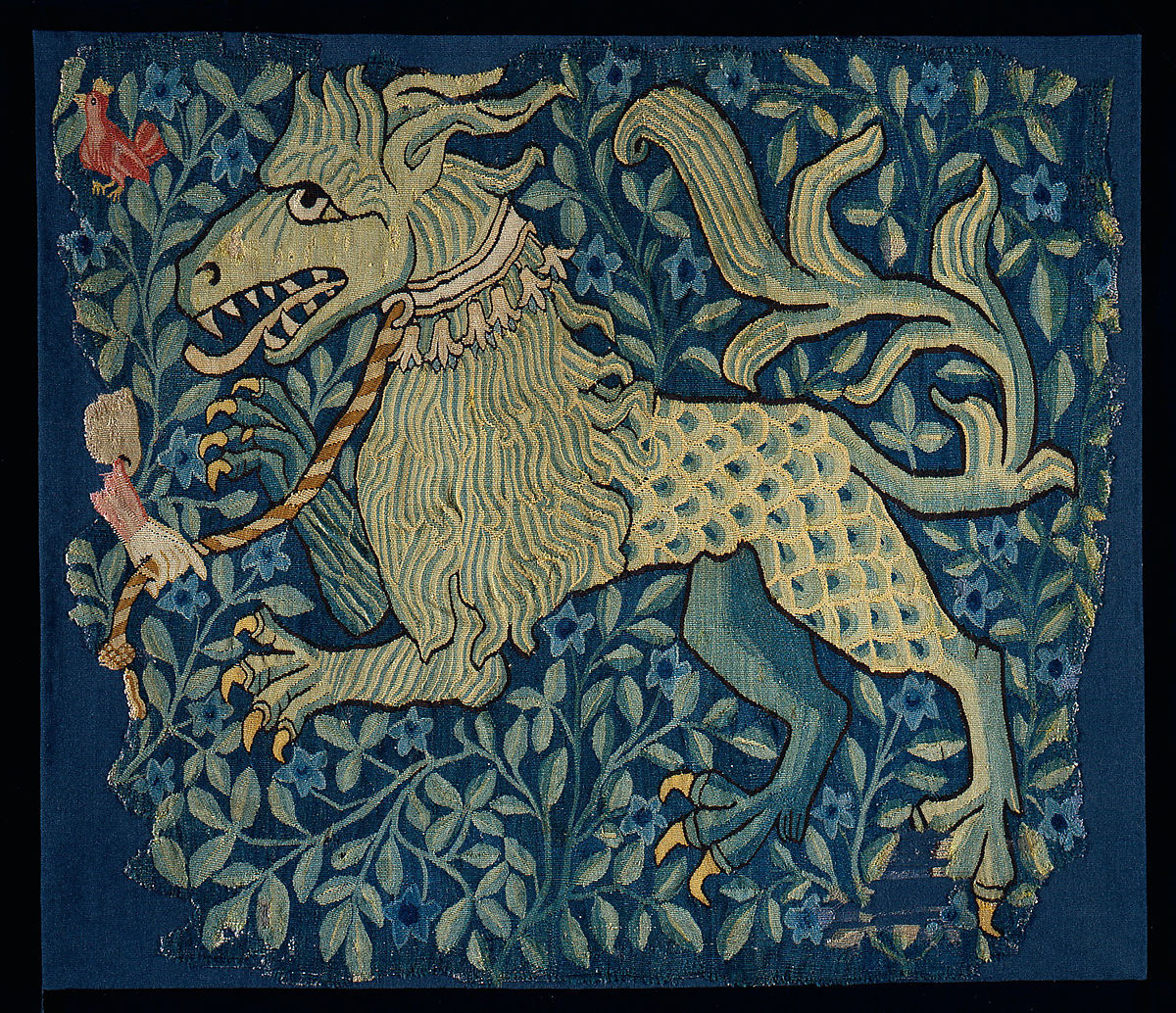Intended Effects
The initial concept for this plush was the poro, a fluffy creature from the game League of Legends. I intended to create a fluffy white poro plush which would have a large, round body, eyes, horns, and a tongue.
Challenges
First, I decided to make the poro light pink instead of white due to the selection of available fabrics. Because the poro represents love and should be a joy to hold, a rose poro would be an appropriate change. I combined multiple tutorials, techniques, and experiments to create the final product, and experienced challenges relating to creating the body shape, horns, and integrating additional body parts. For the round body I used the four piece sphere pattern. For the horns I experimented and sewed three different horn shapes before settling on the most suitable one. Adding the tongue and eyes were a little challenging, but adding the horns to the body was much more challenging. Despite my hand sewing using thicker thread/yarn at the attachment area, the horns still have a tendency to pop out a little.
Successes
Overall I like the placement of the tongue and eyes (I had to redo the eye placement multiple times). The final horn shape is also nice. The poro is round, fluffy, and cute. If a person who played League looked at it, I believe they would be able to recognize it.
]]>- Completed preliminary research on poro shape, structure, and texture
- Purchased necessary materials over Thanksgiving break (see above image)
- Decided to create a rose/”love” poro instead of a standard white one after seeing available fabrics
- Scaled measurements of base pieces up for a larger final product
- Started cutting out base piece shapes in paper, then fabric
- Next steps: complete all base piece cutouts, begin sewing main body together
Poros are fictional creatures from the popular game League of Legends. They originated from the Freljord, a harsh and frozen land, and propagated to many other areas over time. Poros represent truth, valor, innocence, and love. While they are not playable champions, they cheer players on from the sidelines in Howling Abyss. I wanted to create a poro from scratch because Riot’s official poro plush is both sold out and does not do the actual design justice (see third picture below). Additionally, I would just love to create a fluffy companion from one of my most-played games. This will be a learning experience regarding choosing textured fabrics, measuring and scaling different components, and constructing stuffed toys.
Materials
- Fabric/textiles
- Fur (main body)
- Tongue
- Horns
- Feet
- Eyes (either buttons or fake eye material)
- Stuffing
- Sewing needles and thread
- Scrap cloth
- Pins
Timeline
Nov 23: Submit proposal
Nov 24 – 26: Complete research on form, structure, and component measurements, as well as finalize materials needed
Nov 26: Gather materials and cut preliminary shapes from fabric
Nov 29 – Dec 1: Sew main body, tongue, eyes
Dec 4 – Dec 6: Sew horns and any remaining details
Dec 8 – Dec 9: Final clean up/touch ups
]]>For our encoded cloth project, we created a futuristic world passport. We envisioned that, in the future, all borders on Earth would be open and people would not need a passport to travel around. People might need a passport to travel through space. Our world passport’s intended effect was to symbolize of a more open and optimistic future. We were surprised at how much work went into each individual page and the overall passport structure. Each page had its own concept and layout, and all the pages were sewn together. We discovered upon finishing the passport that it bore a resemblance to a children’s book. It could be used as a story of hope, the world, and the future for children. It was a challenge to end up with exact, conforming page sizes, even though we measured out each page at the start of the project. Another challenge was putting our pages together, as the final product was too thick to put through a sewing machine. We succeeded in creating a passport that contained many unique pages and ideas. Our combined contributions created a successful, cohesive final passport.
]]>When I imagine the future, the movie Blade Runner 2049 immediately comes to mind. In the future, the world has largely been devastated by war, pollution, and natural disasters. Within the ruination there are still pockets of civilization, overcrowded cities housing extremely advanced technology. We will focus on life in the cities, where people are still largely divided by class and economic distinctions. Those in the lower classes must still struggle for survival. Life is harsh and unforgiving. Any clothing worn is for practical purpose, and little thought is given to fashion. On the other hand, the upper class are either focused on developing new technology or maintaining control over different industries. Their clothing maintains a minimalistic style and involves the usage of smart textiles. There also exists the hedonistic, ungrounded upper class population who live in opulence. Their clothing is ostentatious and avant-garde, and they live to bring fashion to new heights. The cities smell of sulfur and metal. There are constant sounds of running vehicles, buzzing electricity, murmuring crowds, and music or advertisements being played. The city aesthetic ranges from overcrowd concrete jungle to neon cyberpunk. People still travel by foot or in vehicles such as cars, but there are also new vehicles. There is significantly more air travel. There are also more technologically advanced versions of skateboards, bikes, and scooters used for travel, such as hybrid hoverboards. Food would become a scarce resource, as farming and organic growth would become impossible at a certain point. Like in the film Snowpiercer, there would be mass production of “protein” for the lower class using questionable ingredients. 3D printing technology would also be used to produce and experiment with food. Humans will ruin themselves through war and pollution, yet make unthinkable leaps in technology, to get from today to 2070.
]]>Progress
Since the last weaving progress check, I have finished and tied off my test/experiment piece and weaved an additional, shorter companion piece with different colors, materials, and themes. For my final piece I initially wanted to create images of jellyfish deep in the ocean, but things did not go entirely as planned. It was much more difficult to create exact imagery than I had anticipated. Both my test and final pieces ended up becoming products of much experimentation, with surprising details that I both liked and disliked. As a result I have mixed feelings about my final piece, mainly due to how different it turned out from my expectations. My final idea is that the piece still maintains some semblance of an abstract jellyfish, but it also represents chaos and branching of thought. In a way it represents my weaving process, discovery, troubles, and all.
What worked well
The variety of colors used, as well as contrast between light and dark colors, worked well in both final pieces. In the test piece, I started with soft, pastel colors before moving to bright, almost neon greens and pinks. In the final piece, there were contrasting blacks, blues, and green-whites. Additionally, I think the choice of unusual materials in the final piece worked well. I used wool, ribbon, and a shiny, textured, woven net material I found in class. The presentation of the different materials was interesting, as they provided new textures and lighting that regular weaving could not. I was very drawn to the difference in texture that the wool provided, and reflected light that came from the net material. The experimentation with different techniques, lines, and knots also worked well.
Improvements
The initial planning stages could have been improved. At first, I did not know whether or not the test piece would be included in our final submissions. Thus I did not have as much of a vision for the first weaving portion (not to say that that’s a terrible thing). In retrospect I would have liked to plan it out more while also incorporating experimentation. There could have also been improvements in fully incorporating the unusual materials used into the tapestry. A lot of the material utilizes the clinginess and fine strands of yarn used. In the future I would like to either weave it in more fully or sew it on top. It was difficult for the material I chose to work with. Finally, I would improve the neatness of the final presentation, as the final piece felt a little messy to me. A part of me appreciated the chaos while another part of me wished it would be neater somehow.
Lessons learned
I learned how to weave which is really cool! I learned basic techniques of weaving, including simple patterns, knots, and incorporating outside elements. I learned not only to not be afraid of trying new things and experimenting, but also to have some structure and planning involved for optimal results. I learned about what others were doing with their weavings and took inspiration for the future.
Five directions
- A dark piece because I enjoyed using dark and contrasting colors. I would like to see a darker and more contrasting piece with tight weaving (no warp threads seen).
- A piece with structural experimentation, unlike the typical top down woven tapestry. It could use wooden sticks or the loom itself to create interesting 3D shapes upheld by weaving.
- A piece that kept the test and final piece together to create a longer work. I would like to experiment with gradients and complimenting colors all the way down, then sew and embellish with details over the weaving.
- A piece involving new techniques such as braiding, felting, exposed warp threads, and integrating puff balls.
- A piece resembling a woven chess board, with a woven checkered pattern and chess pieces that could either be attached or detached from the piece. It would be possible to actually play chess with the tapestry laid out on a table if one wished.
This weaving is a fragment of an Upper Rhenish tapestry. It was made by an unknown artist in Basel, Switzerland. The materials used are wool on linen, as it is a tapestry weave. The weaving shows a mythical, lionlike beast being dragged on a leash, with flowers and plants growing in the background. The weaving is about beasts referenced in the Physiologus and medieval bestiaries. Such beasts represented vices, and the leashed beast in the tapestry symbolizes taming lustful impulses. The weaving was made circa 1420-30. This weaving was used as both decoration and insulation in homes.
]]>
